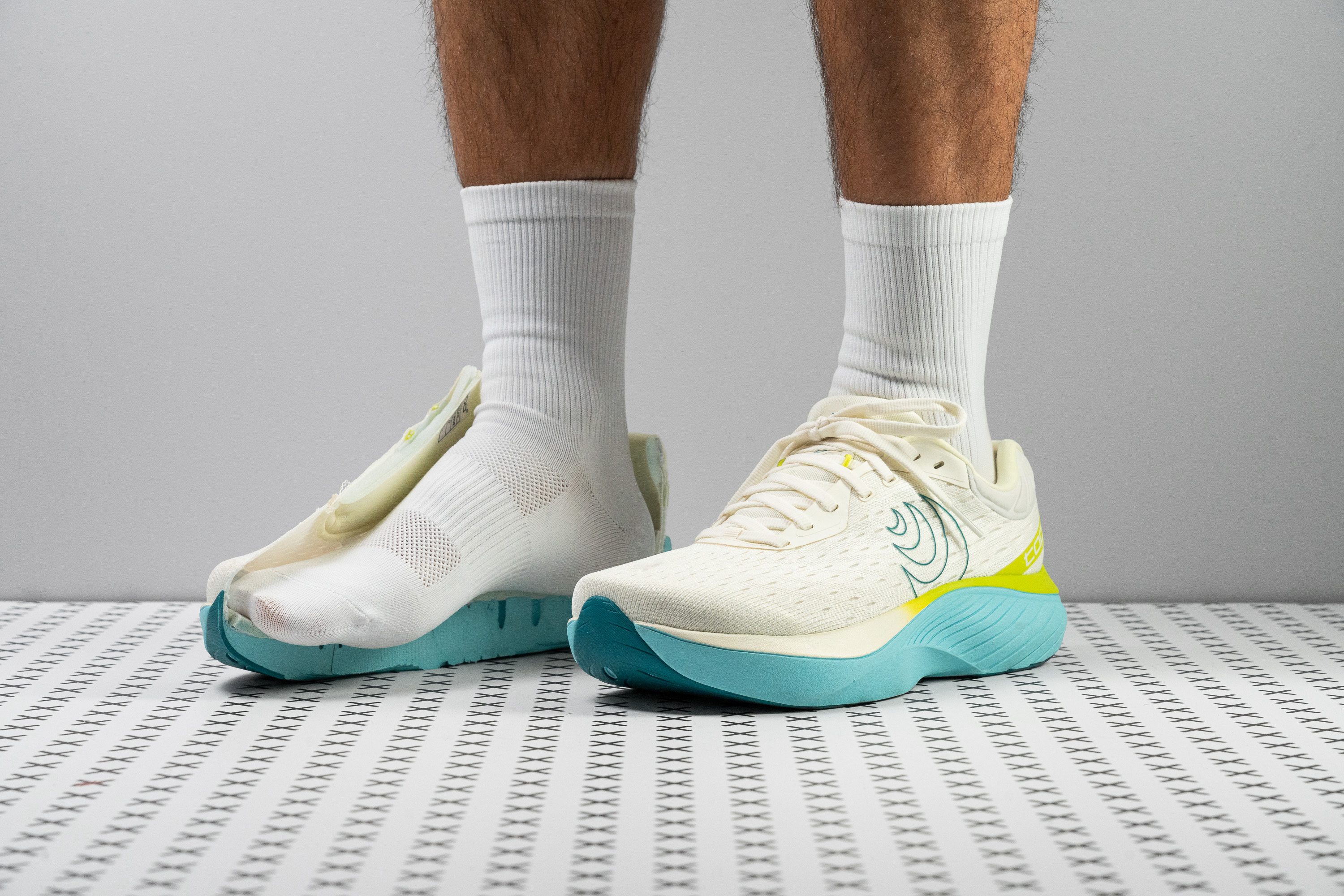Nuestra conclusión
Pros
- Amortiguación comodísima
- Parte delantera muy espaciosa
- Pisada estable
- Plantilla Ortholite premium
- Geometría adaptada al mediopié
- Ligeras para lo grandes que son
- Ideales para carreras largas fáciles
- Sin deslizamiento del talón
Contras
- Sin retorno de energía
- No son aptas para los corredores con el pie estrecho
- Podrían ser un poco más flexibles
Veredicto de los usuarios
- Top 14% entre Zapatillas de running para asfalto
- Top 12% entre zapatillas de running neutras
Comparativa
Las zapatillas de running más parecidas
+ + Añadir unas zapatillas | |||||
|---|---|---|---|---|---|
| Puntuación global | 90 Excelentes | 89 Notables | 90 Excelentes | 86 Buenas | |
| Precio | 180 € | 230 € | 220 € | 200 € | |
| Pace | Correr a diario | Correr a diarioTempo / series | Correr a diario | Correr a diario | |
| Arch support | Neutral | Neutral | Neutral | Neutral | |
| Peso laboratorio Peso marca | 9.7 oz / 275g 9.7 oz / 275g | 9.1 oz / 258g 9 oz / 255g | 8.7 oz / 247g 9.2 oz / 261g | 10.5 oz / 299g 10.8 oz / 305g | |
| Lightweight | ✗ | ✗ | ✓ | ✗ | |
| Drop laboratorio Drop marca | 5.3 mm 5.0 mm | 6.7 mm 6.0 mm | 5.9 mm 6.0 mm | 8.3 mm 8.0 mm | |
| Técnica de carrera | Medio/antepié | Medio/antepié | Medio/antepié | TalónMedio/antepié | |
| Talla | Tallan bien | Tallan bien | Tallan bien | Tallan bien | |
| Rigidez de la mediasuela | Equilibrada | Blanda | Blanda | Equilibrada | |
| Diferencia de la rigidez de la mediasuela en frío | Normal | Pequeña | Pequeña | Pequeña | |
| Durabilidad de la parte delantera | Decente | Decente | Mala | Decente | |
| Durabilidad del acolchado del talón | Alta | Baja | Alta | Alta | |
| Durabilidad de la suela exterior | Buena | Buena | Buena | Buena | |
| Transpirabilidad | Media | Media | Media | Media | |
| Anchura / ajuste | Ancha | Media | Media | Media | |
| Anchura de la parte delantera | Ancha | Media | Media | Media | |
| Flexibilidad | Moderada | Moderada | Moderada | Rígida | |
| Rigidez torsional | Rígidas | Rígidas | Rígidas | Rígidas | |
| Rigidez del contrafuerte del talón | Rígido | Moderado | Rígido | Rígido | |
| Rocker | ✗ | ✗ | ✓ | ✓ | |
| Talón laboratorio Talón marca | 37.8 mm 38.0 mm | 39.7 mm 37.0 mm | 37.8 mm 38.5 mm | 42.7 mm 44.0 mm | |
| Antepié laboratorio Antepié marca | 32.5 mm 33.0 mm | 33.0 mm 31.0 mm | 31.9 mm 32.5 mm | 34.4 mm 36.0 mm | |
| Anchuras disponibles | EstándarAncho | Estándar | EstándarAncho | EstándarAnchoExtra Ancho | |
| Orthotic friendly | ✓ | ✓ | ✓ | ✓ | |
| Estación | Todas las estaciones | Todas las estaciones | Todas las estaciones | Todas las estaciones | |
| Removable insole | ✓ | ✓ | ✓ | ✓ | |
| Clasificación | #41 Top 12% | #95 Top 26% | #68 Top 19% | #175 Top 48% | |
| Popularidad | #155 Top 43% | #172 Top 47% | #51 Top 14% | #18 Top 5% |
Quién debería comprárselas
Las Topo Atmos destacan como un buen modelo de entrenamiento diario para:
- Los runners que están buscando un modelo de amortiguación máxima y una parte delantera espaciosa que pasan de las plataformas con drop cero.
- La gente que lleva mucho tiempo siendo fan de Topo Athletic y que ya tienen ganas de unas zapatillas versátiles altas para complementar su rotación.
- Los corredores de mediopié o de metatarsos que están buscando unas zapatillas para enfrentarse a largas distancias que te dejen estirar los dedos.
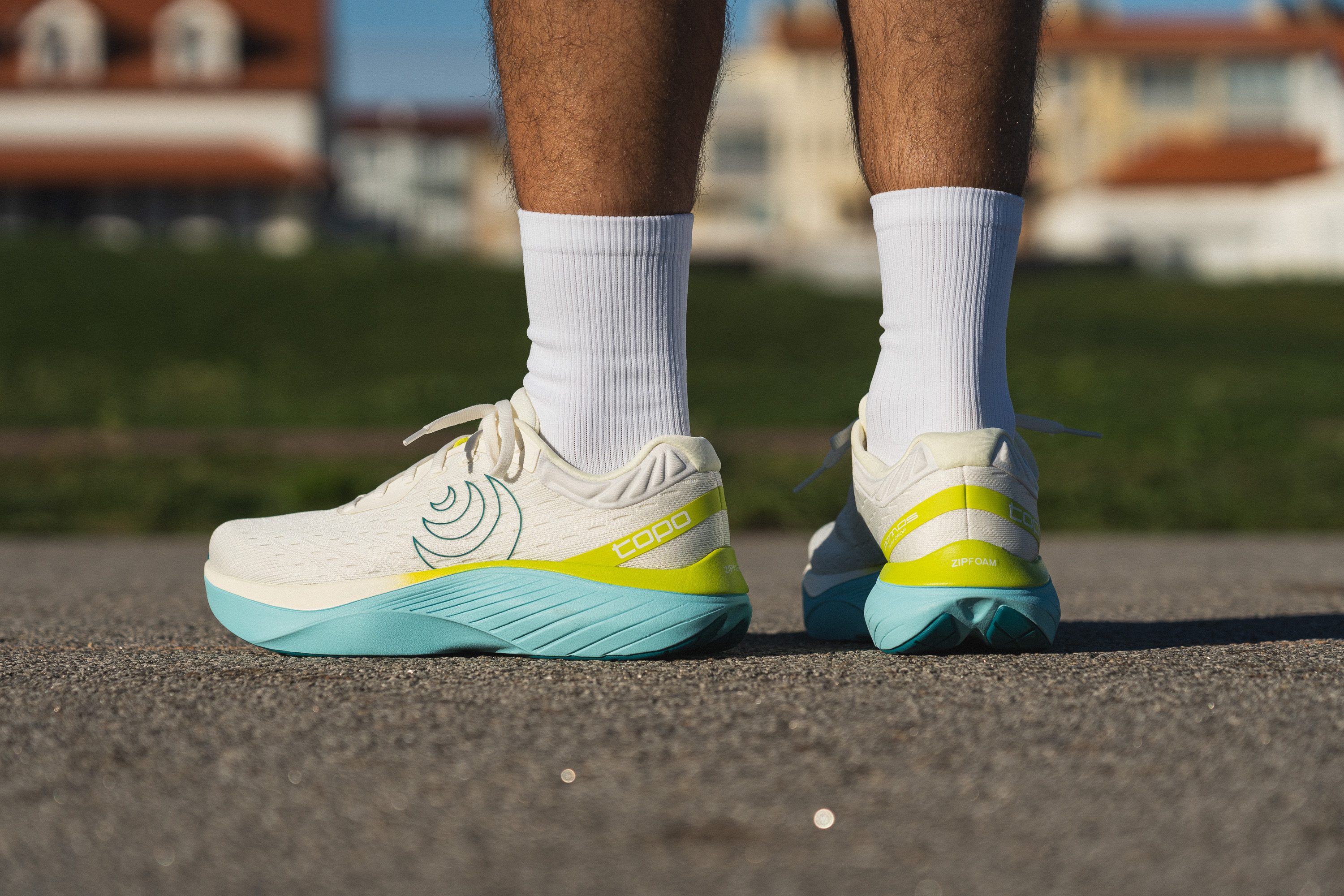
Quién NO debería comprárselas
Creemos que los corredores que quieren una amortiguación muy mullida terminarán decepcionados con las Atmos, ya que su mediasuela de ZipFoam no es tan blandita como la de otros modelos de amortiguación máxima. Si lo que estás buscando es una amortiguación que se centre en la comodidad, te recomendamos que les eches un ojo a las New Balance Fresh Foam 1080 v14, y más si tienes los pies estrechos y necesitas un ajuste más personalizado.
En nuestra opinión, los fans de Topo que están acostumbrados a los diseños ágiles de la marca a lo mejor también terminan decepcionados. Las Atmos son grandotas y rígidas, así que sacrifican su agilidad para conseguir estabilidad. Si eso te preocupa, te recomendamos las Topo Cyclone 2, que ofrecen una pisada más ligera y llena de energía.
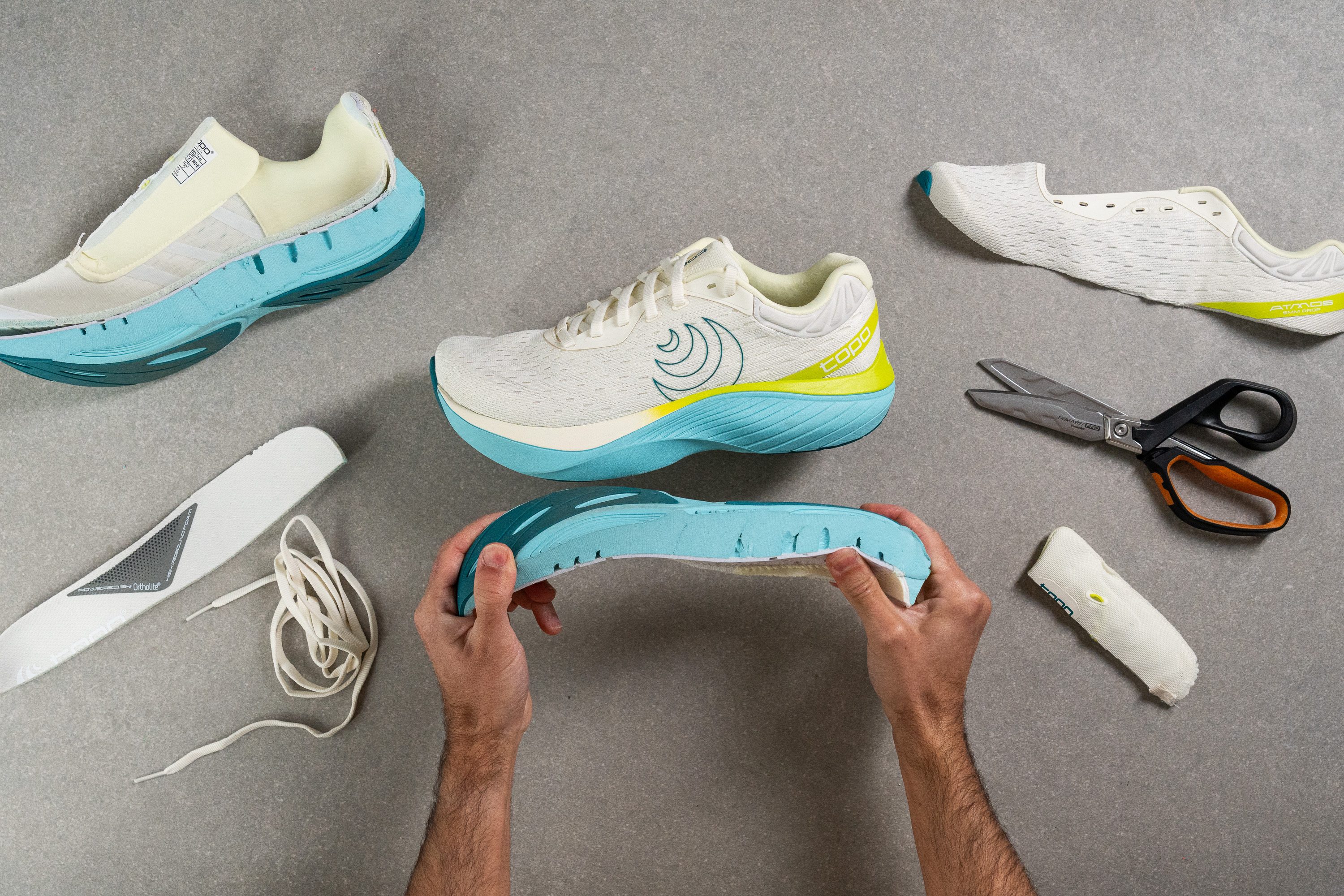
Además, los runners fieles al drop cero probablemente también pasen de este modelo, ya que tiene un drop moderado. Las Altra VIA Olympus 2 son una mejor alternativa.
Amortiguación
Shock absorption
Como tienen un drop bajo, las Atmos se sienten más amortiguadas en el antepié que la mayoría de las zapatillas de running del mercado. Pero con su resultado de 130 SA en el talón y 122 SA en el antepié en nuestra prueba de absorción de impactos, nos protegen bien de los golpes en general.
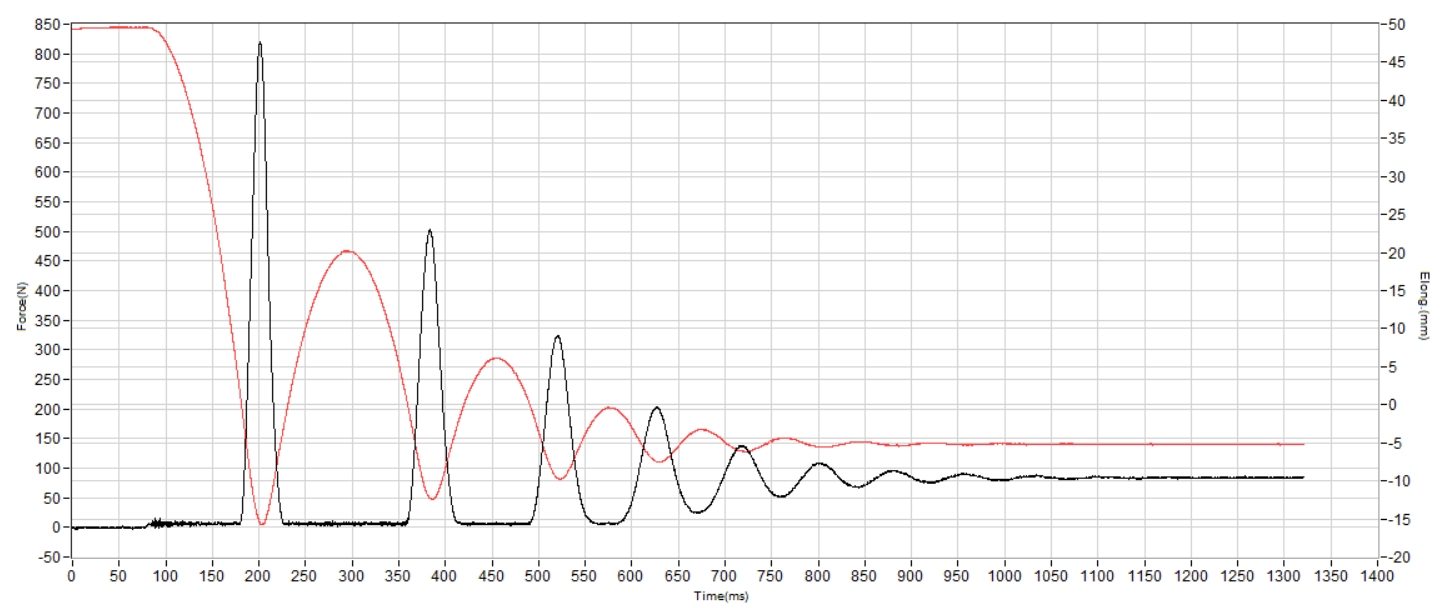
| Topo Atmos | 130 SA |
| Media | 130 SA |
Energy return
Las Topo Atmos vienen cargadas de ventajas, pero el retorno de energía no es una de ellas. Solo consiguieron un 48,3 % en el talón y un 50,0 % en el antepié en nuestra prueba, que son cifras que están muy por debajo de lo que nos esperábamos para unas zapatillas de entrenamiento diario modernas.
| Topo Atmos | 48.3% |
| Media | 58.6% |
Altura de la suela en la zona del talón
Algo que se suele criticar de las Topo es su oferta limitada, ya que no tiene modelos en categorías clave como las superzapatillas (y sigue sin haber rastro de esto) o los modelos de entrenamiento diario con amortiguación máxima (¡por fin están aquí!).
Con sus 37,8 mm de altura, las Atmos han conseguido entrar oficialmente en el mercado maximalista, ofreciéndoles a los seguidores de Topo una opción bien amortiguada para enfrentarse a las distancias largas. Nuestro calibre confirmó que la protección del talón es más que suficiente, por lo que también podemos decir que puedes entrenar para un maratón con ellas.
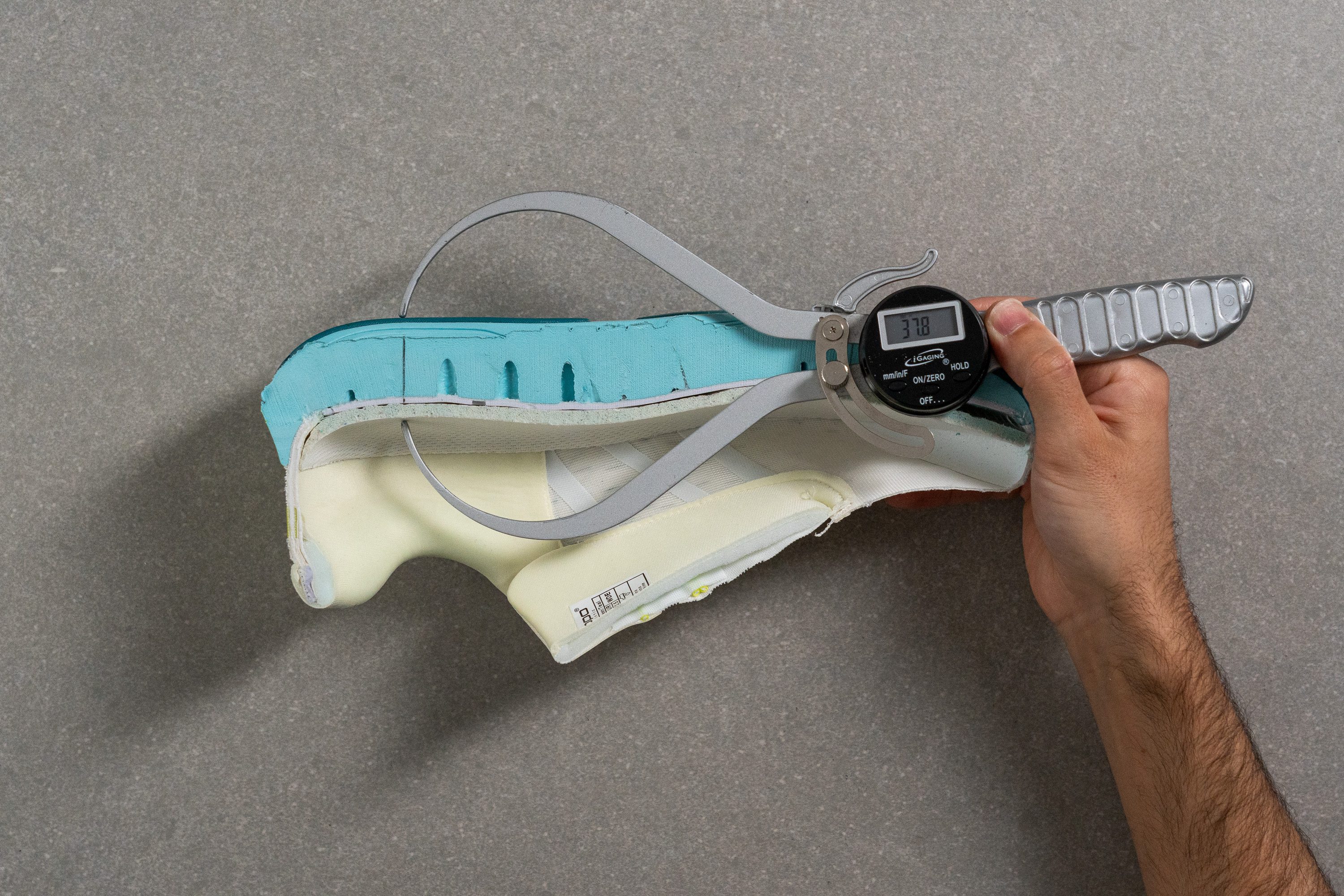
| Topo Atmos | 37.8 mm |
| Media | 34.8 mm |
Altura de la suela en el antepié
Si el talón se sentía amortiguado en comparación con la media, lo del antepié ya es una locura, rompiendo con las medidas de la mayoría de los modelos de entrenamiento diario. Al medirlo, nos dio 32,5 mm, así que si la absorción de impactos es una de tus prioridades, las Atmos te van a encantar.
¿Que si es demasiado? A ver, puede que sí, porque al final son más de 30 mm... Si estás asintiendo mientras lees esto, las Topo Phantom 3 tienen una suela un poquito más baja, así que a lo mejor se adaptan mejor a ti.
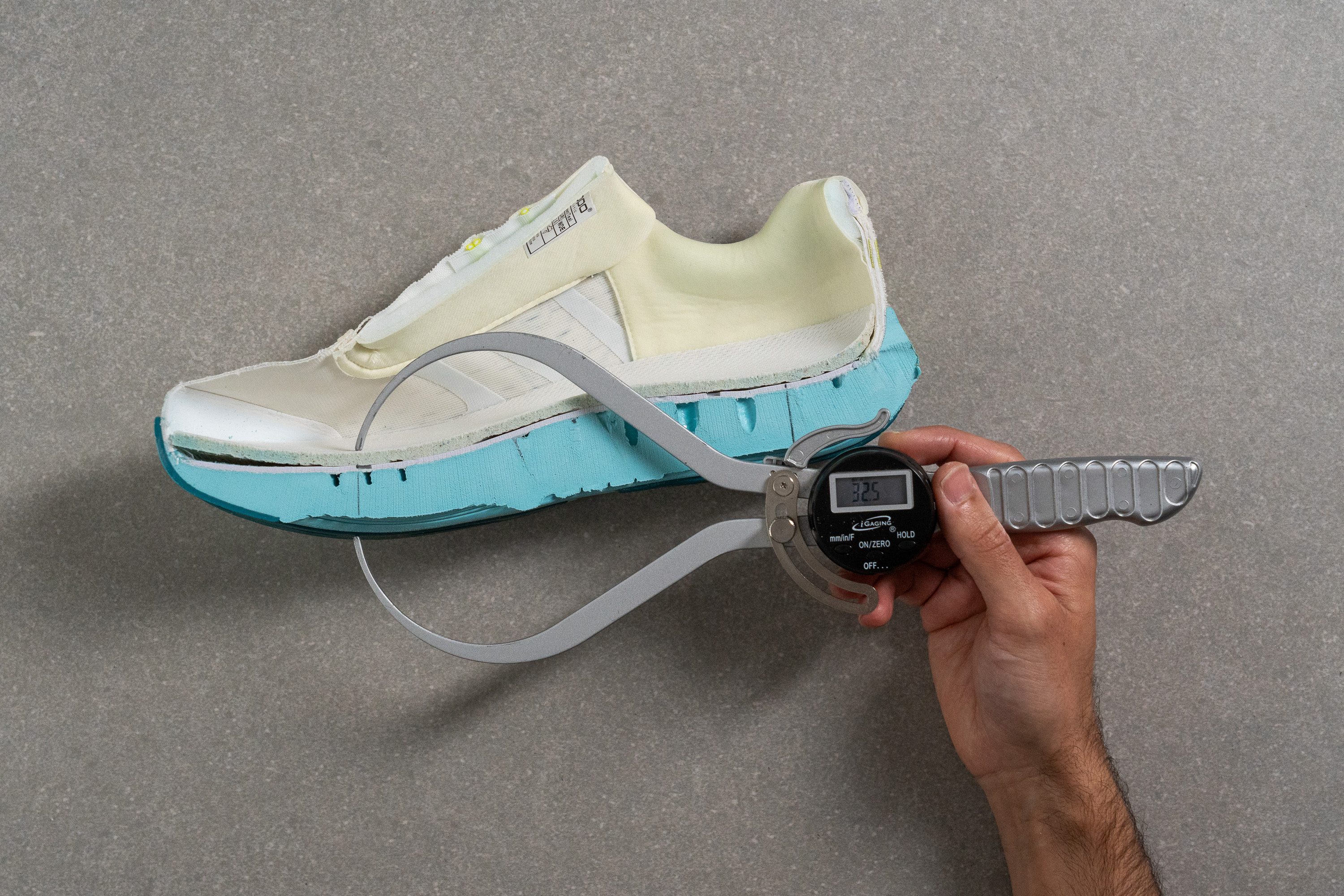
| Topo Atmos | 32.5 mm |
| Media | 26.2 mm |
Drop
Igual que otros modelos de Topo que hemos analizado en el laboratorio, las Atmos tienen un drop de 5 mm. Más concretamente, a nosotros nos dio 5,3 mm, que es un nivel de precisión impresionante, ya que pocas marcas consiguen acercarse tanto al drop que dicen que tienen.
Con este drop moderado, las Atmos se adaptarán a muchos corredores, aunque descubrimos que su diseño es específicamente beneficioso para los que aterrizan con el mediopié o los metatarsos.
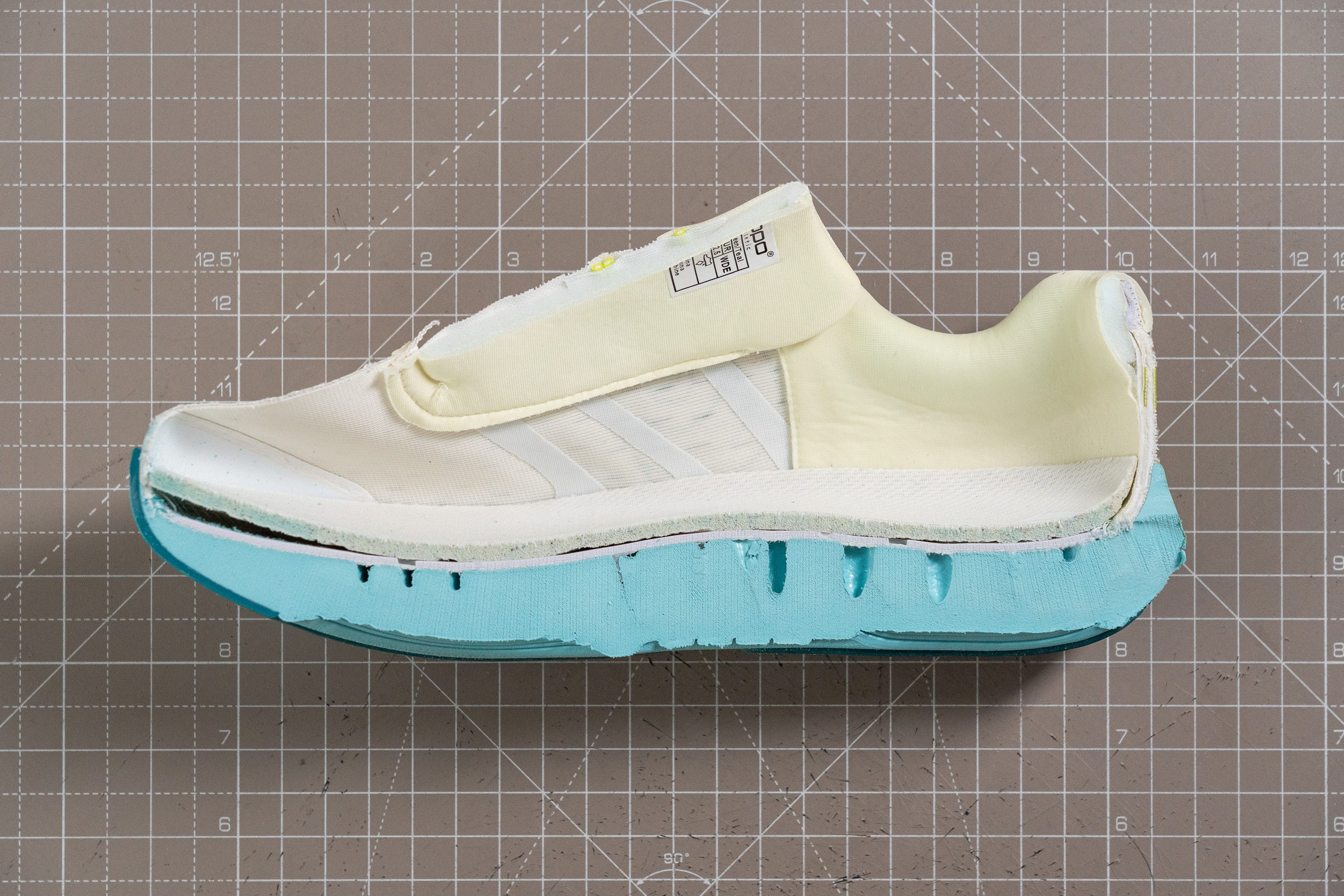
| Topo Atmos | 5.3 mm |
| Media | 8.6 mm |
Suavidad de la mediasuela
La ZipFoam nunca ha sido mullida, ya que Topo pone antes una sensación equilibrada que una pisada ultra blanda en su lista de prioridades. Y sí, somos conscientes de que esto puede no gustarle a todo el mundo, pero también creemos que este enfoque tiene sentido para un modelo de entrenamiento con amortiguación máxima, ya que así se agura ser estable y no chafarse demasiado.
Cuando presionamos nuestro durómetro contra la espuma ZipFoam, marcó 20,0 HA, que es bastante estándar. No ofrece mucho rebote, así que es mejor que no te esperes los niveles de reactividad propios de las espumas supercríticas o de PEBA, como la de las Saucony Triumph 22.
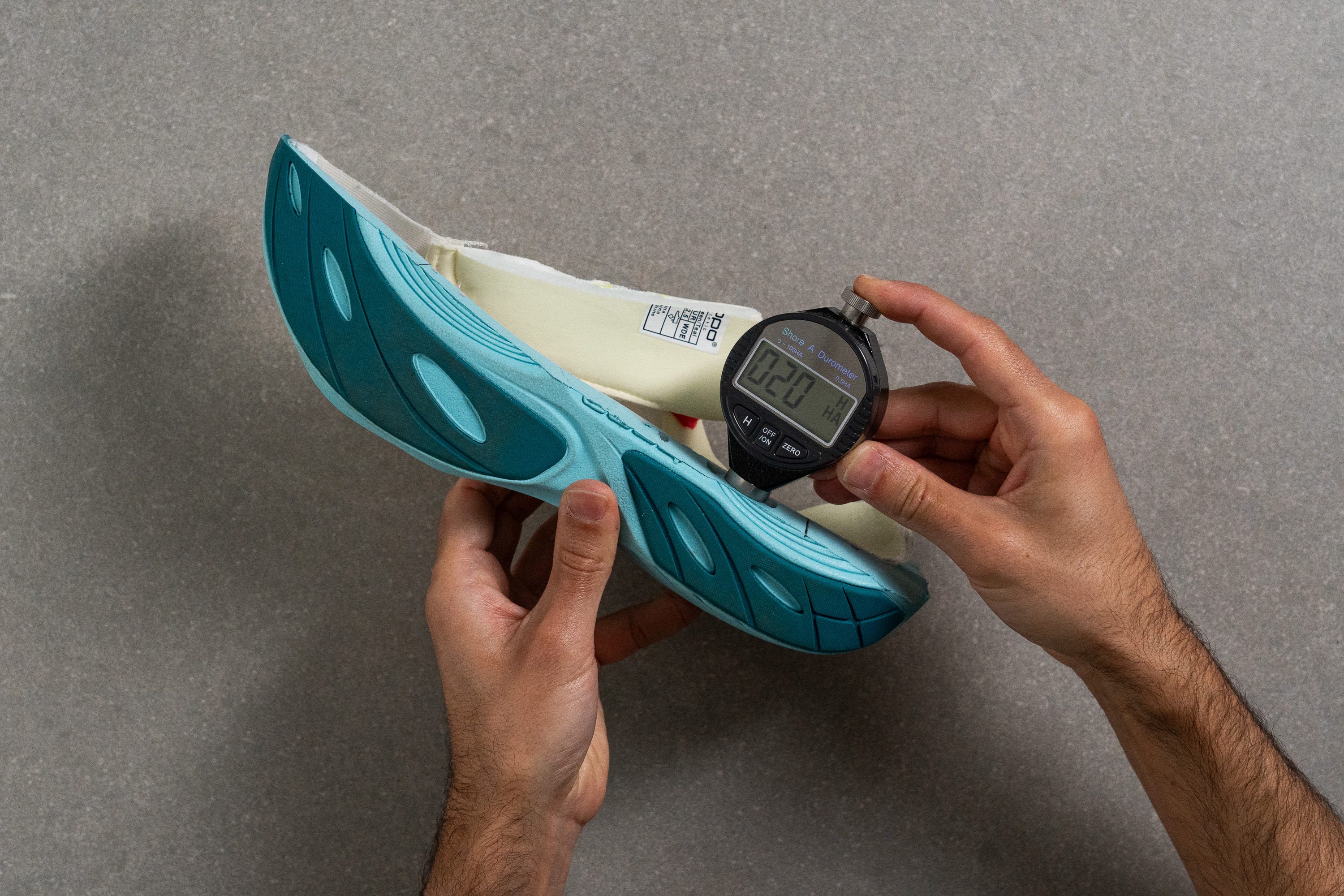
| Topo Atmos | 20.0 HA |
| Media | 20.4 HA |
Rocker
Otro detalle distintivo del diseño de Topo es que pasa de los rockers tan marcados que vemos en otras marcas. Las Atmos son otro claro ejemplo, ofreciendo una pisada más tradicional sin una curvatura exagerada.
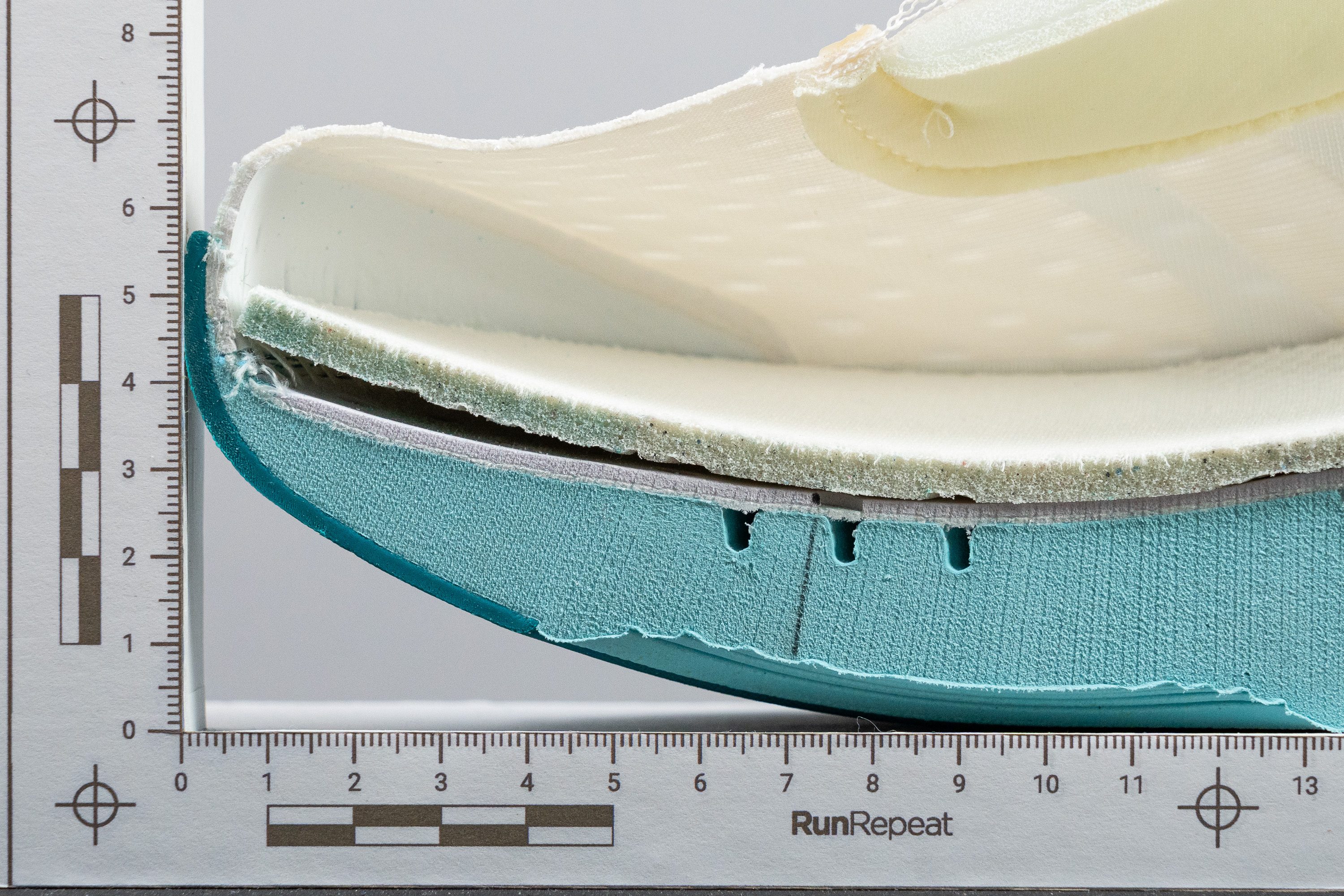
Tallaje y ajuste
Talla
Las Topo Atmos tallan bien (78 votos).
Anchura / Ajuste
Una de las cosas que más gusta de Topo es que sus modelos tienen una parte delantera en forma de pie, así que hicimos un molde de gel de la de las Atmos para ver si conseguía estar a la altura de las expectativas.
Empezamos midiendo su punto más alto, y nuestro calibre marcó 98,5 mm, así que la cosa empieza bien para los corredores con pies anchos.
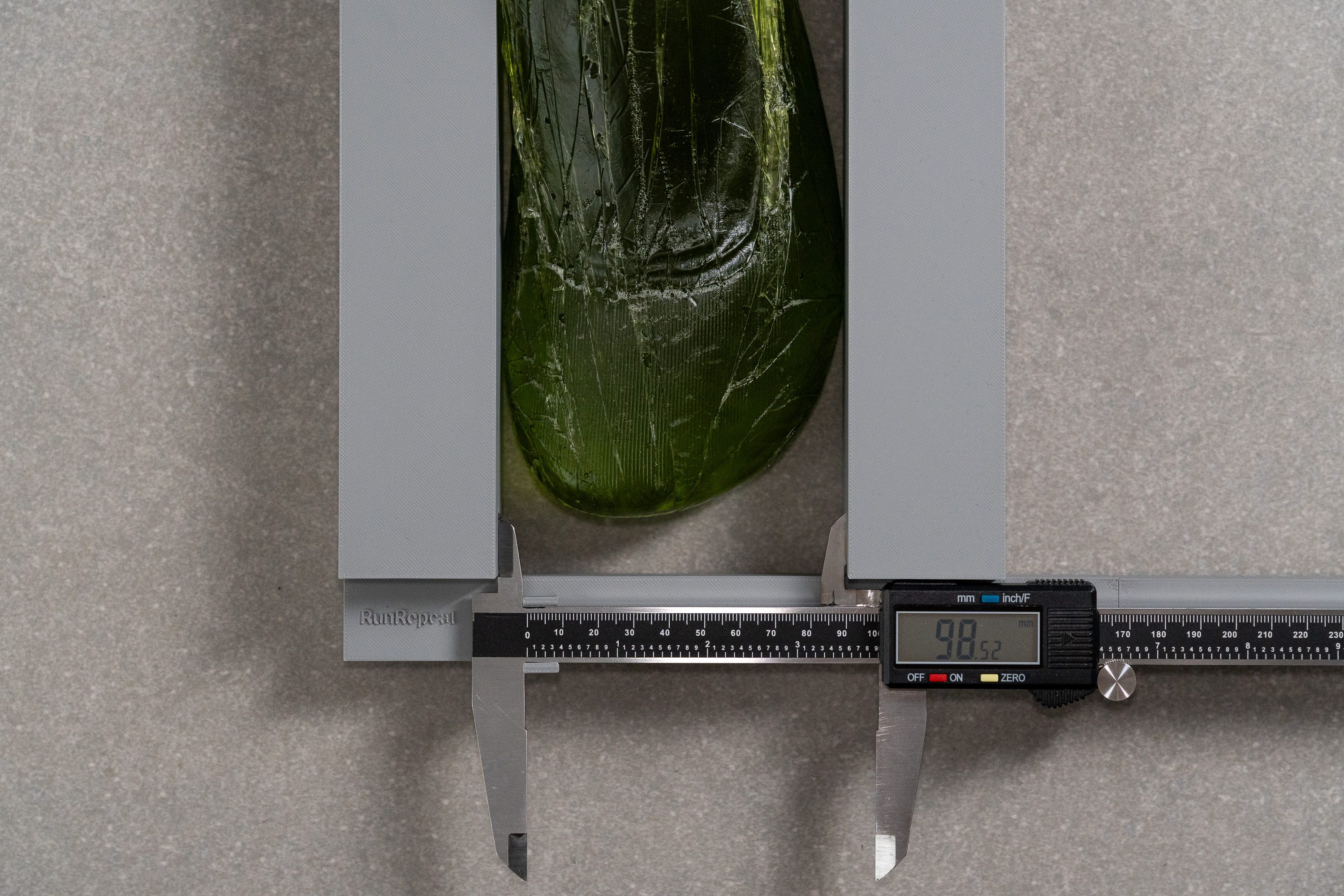
| Topo Atmos | 98.5 mm |
| Media | 95.1 mm |
Anchura de la parte delantera
Pero lo mejor de todo viene ahora. Con una impresionante anchura de 85,0 mm en la zona del dedo gordo, las Atmos tienen una parte delantera que respeta totalmente la forma natural del pie.
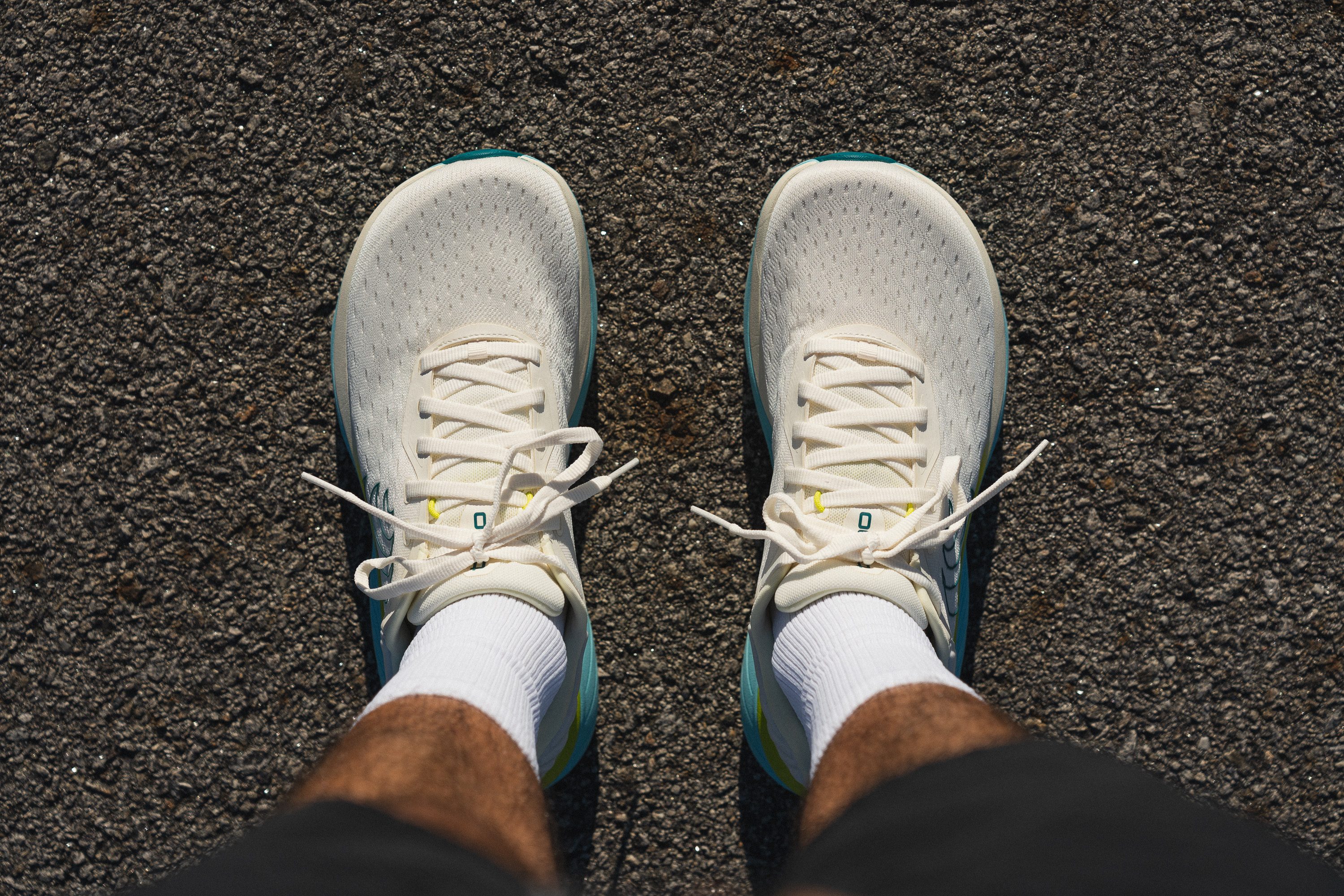
Aunque a lo mejor no son la mejor opción para las personas con pies estrechos, el mercado ya está saturado de modelos más ceñidos, como las ASICS Novablast 5 o las Adidas Supernova Prima.
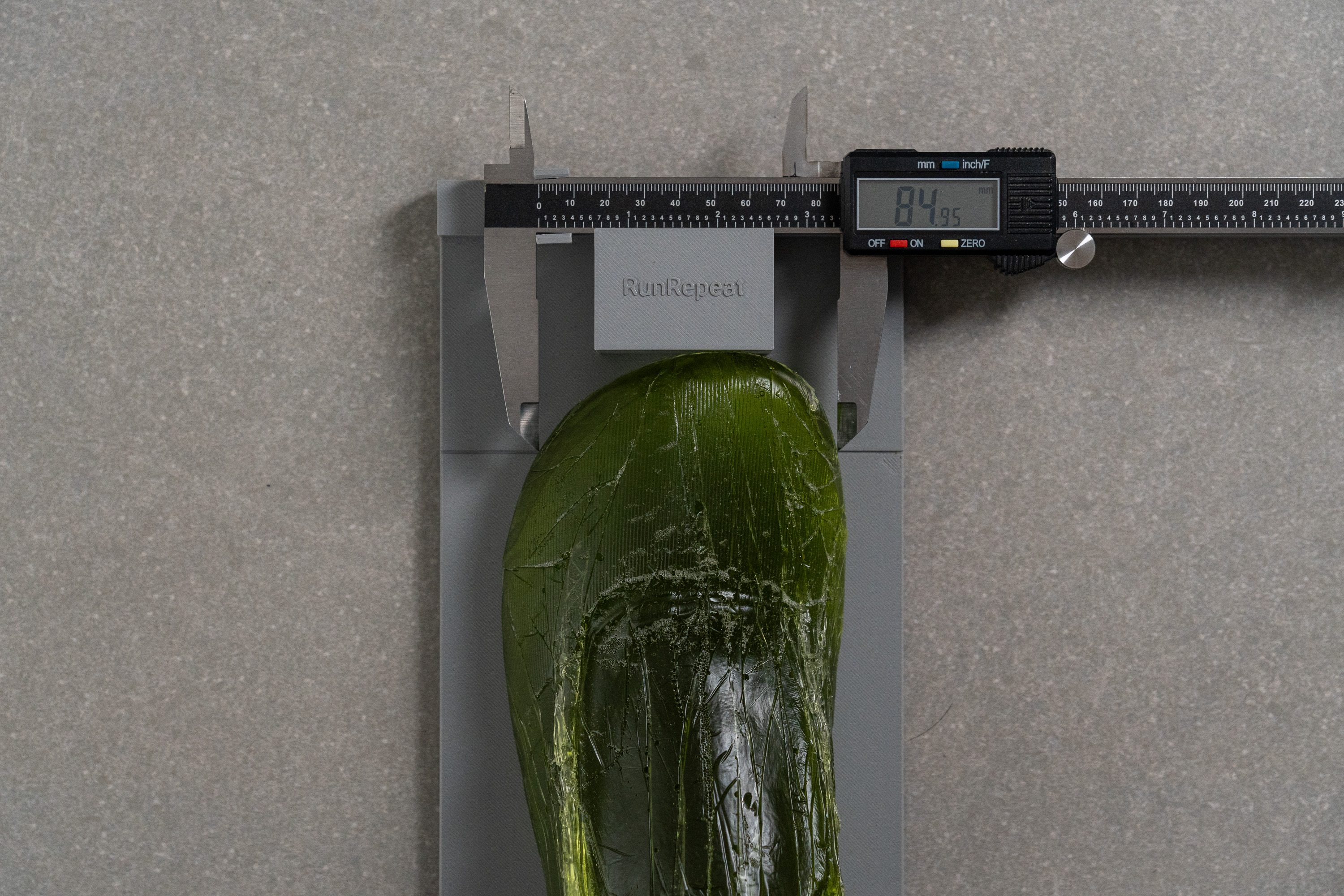
| Topo Atmos | 85.0 mm |
| Media | 73.3 mm |
Altura de la parte delantera
La parte delantera de las Atmos no solo es anchísima, sino también muy alta, con 29,8 mm.
Esta combinación hace que sean una opción excepcional para los corredores con pies de gran volumen que están buscando más espacio y comodidad.
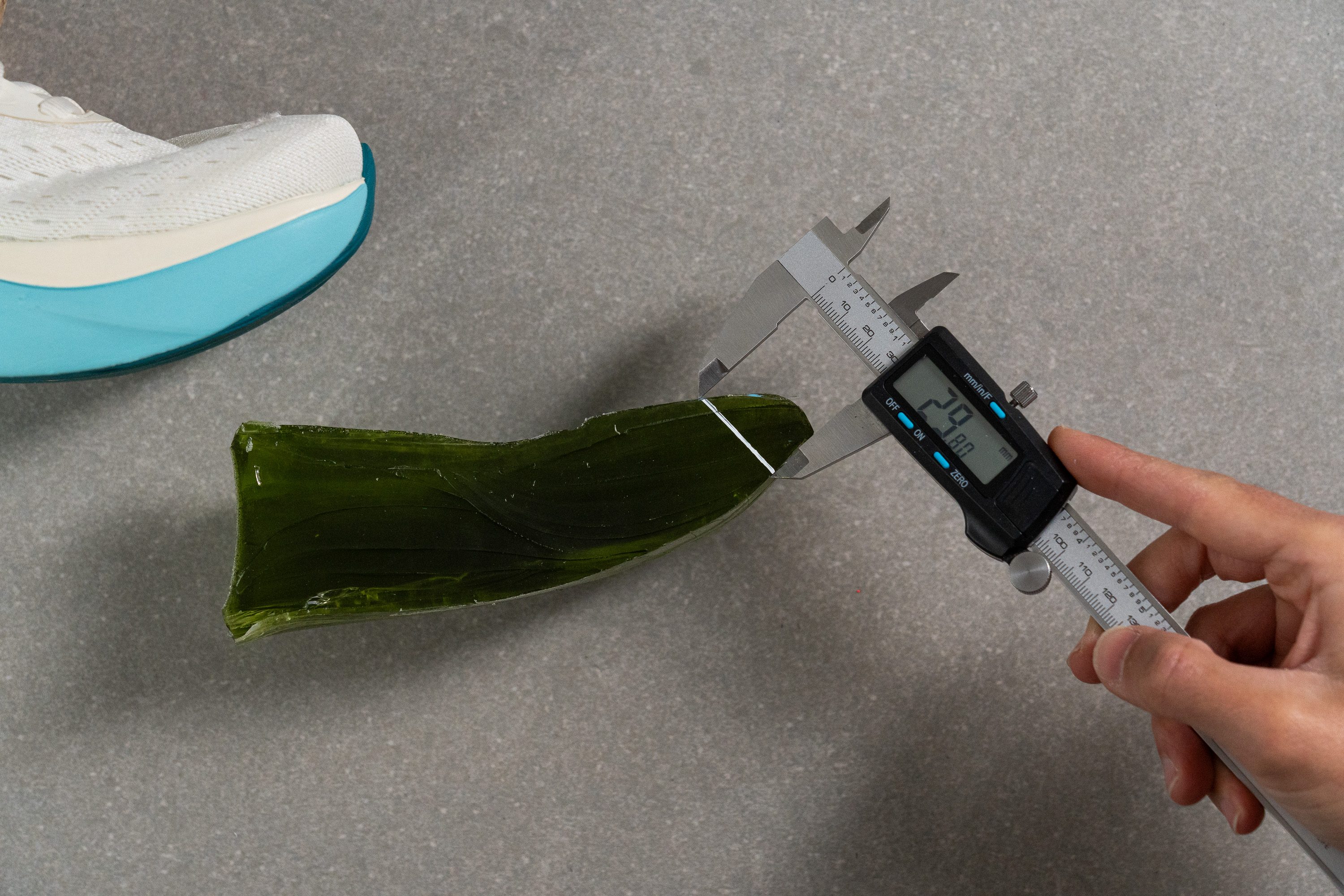
| Topo Atmos | 29.8 mm |
| Media | 27.0 mm |
Tracción / Agarre
Traction test
En nuestra prueba de tracción sobre mojado, las Atmos se llevaron un 0,39, que es un poco menos que la media actual del laboratorio. Incluso así, podemos decir que este modelo de entrenamiento diario tan cómodo sigue ofreciéndonos una pisada segura bajo la lluvia, lo que hace que sea una opción confiable para todo tipo de clima.
| Topo Atmos | 0.39 |
| Media | 0.48 |
Diseño de la suela exterior
Las Topo Atmos tienen una suela exterior parcialmente cubierta con grandes segmentos de caucho en el talón y en el antepié. Estas piezas están incrustadas en una base de EVA esculpida con cortes ovalados que aumentan la flexibilidad. De hecho, hay un corte ovalado en todo el centro que mejora incluso más la flexibilidad.
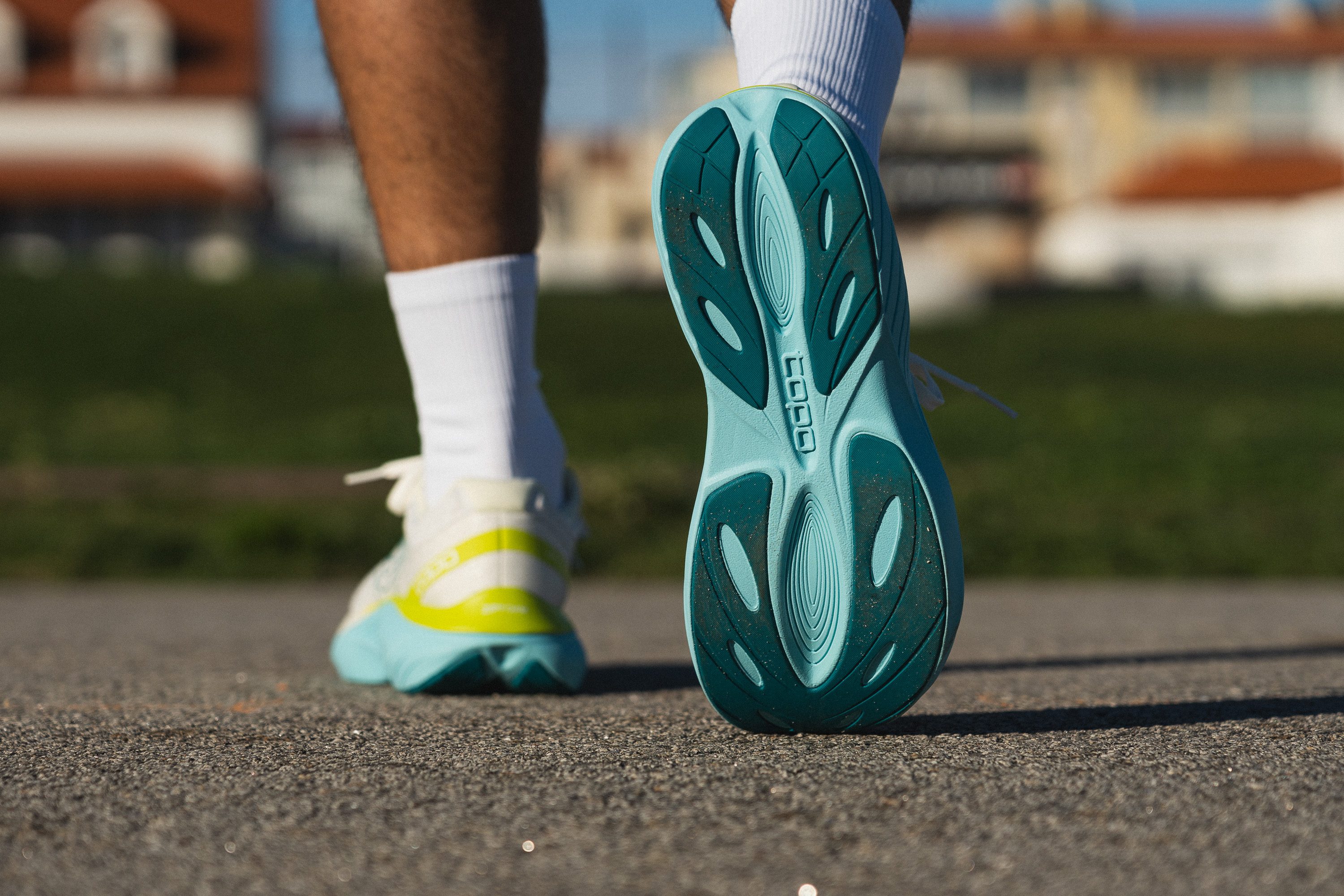
Flexibilidad / Rigidez
Las Atmos nos sorprendieron con su rigidez torsional, así que esperábamos un resultado alto en nuestra prueba de flexión de 30 grados. Y resulta que teníamos razón, ya que necesitaron 15,1 N de fuerza, así que están en el grupo de modelos de entrenamiento diario más firmes. Como esto reduce su flexibilidad, también hace que estas zapatillas no sean tan ideales para las tiradas más fáciles.
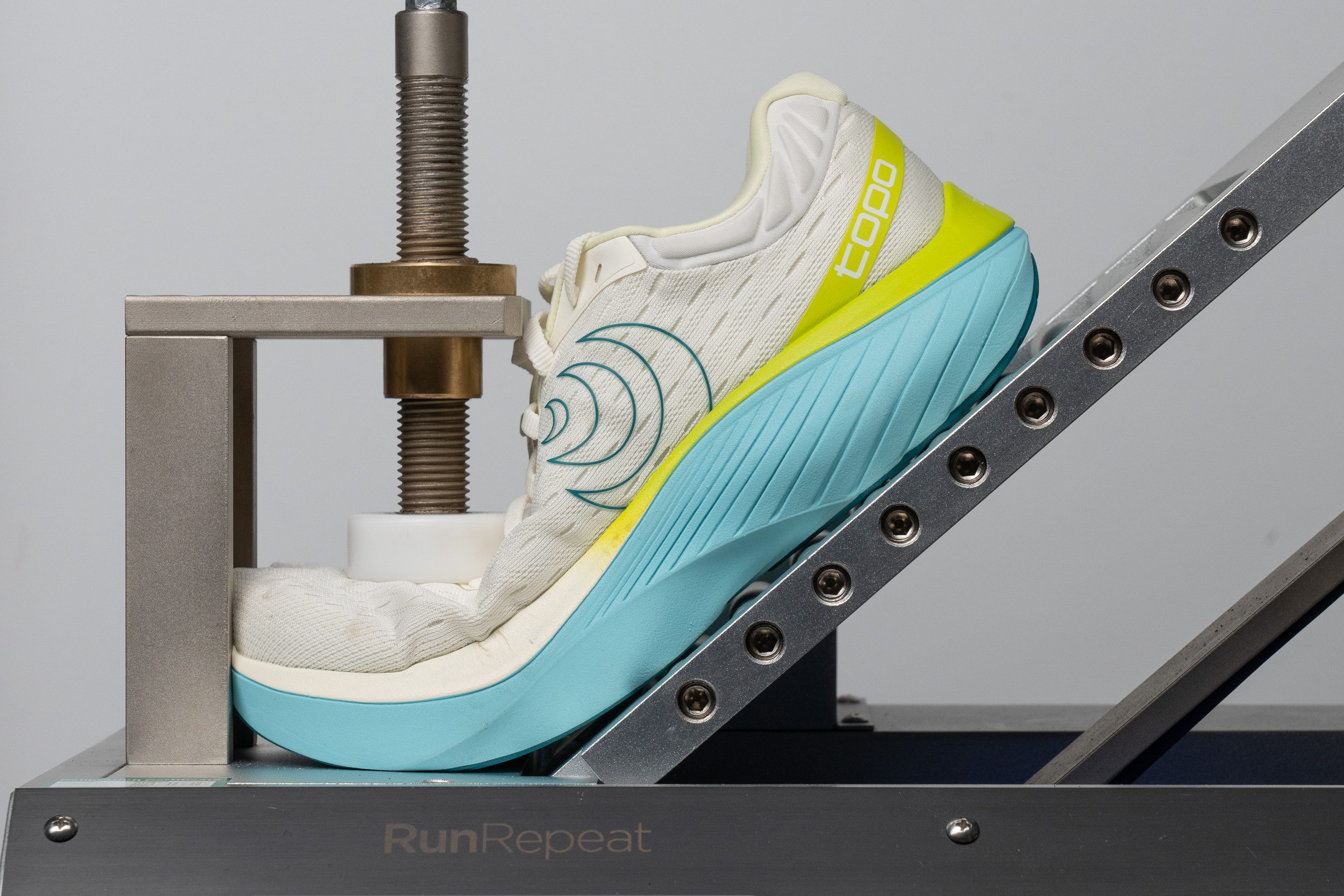
| Topo Atmos | 15.1N |
| Media | 15.3N |
Peso
A pesar de su diseño voluminoso y lo alta que es su suela, las Atmos desafiaron nuestras expectativas con un peso de solo 275 g. La verdad es que fue una sorpresa, así que queremos darle la enhorabuena a Topo. ¡Qué buen trabajo!
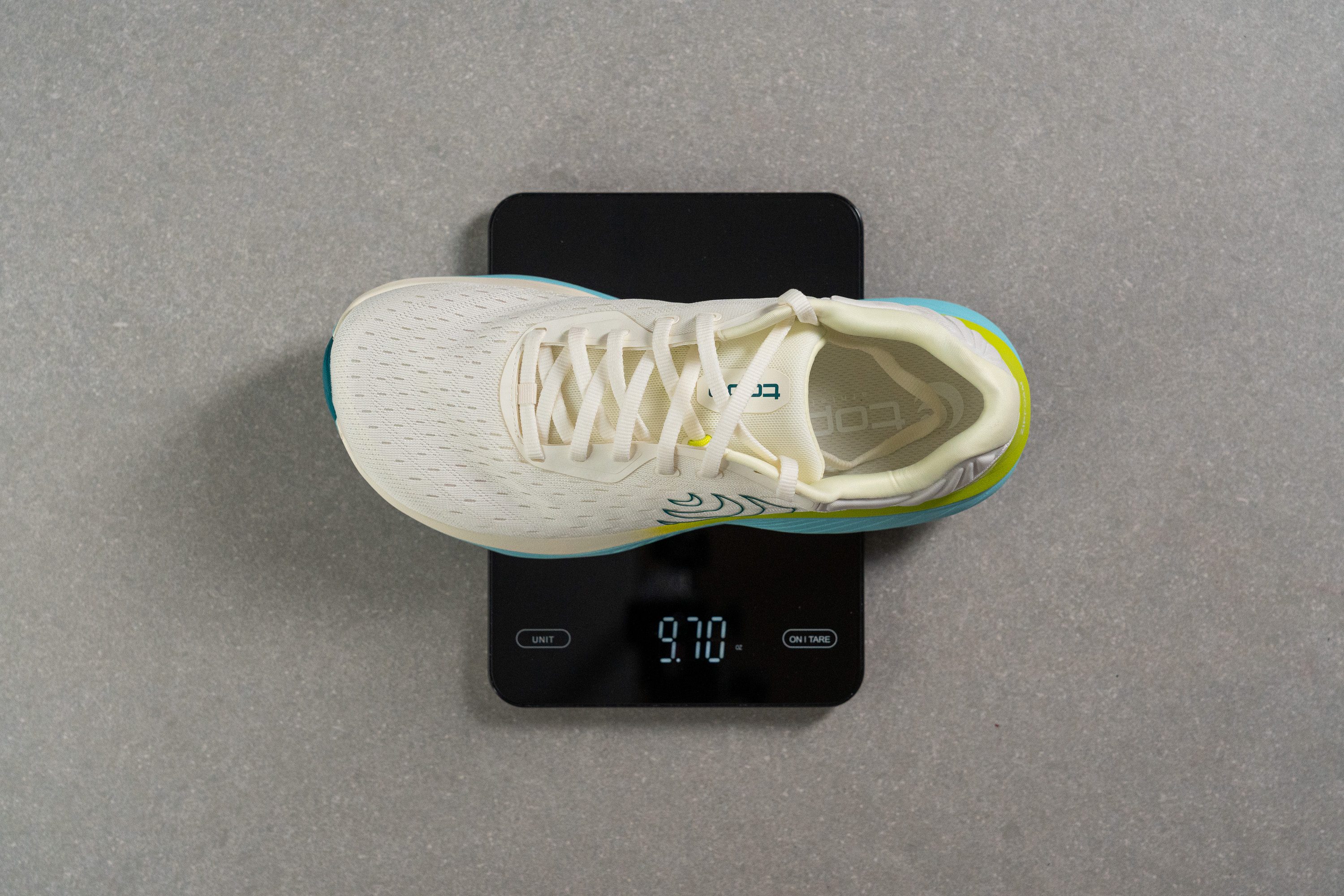
| Topo Atmos | 9.7 oz (275g) |
| Media | 9.3 oz (264g) |
Transpirabilidad
Justo después de sacar las Atmos de su caja, vimos que su upper estaba lleno de agujeritos para el flujo de aire. Pero cuando pasamos nuestras manos por la malla técnica, la verdad es que nos pareció bastante gruesa, que es algo que suele reducir la transpirabilidad.
Cuando las sometimos a nuestra prueba de humo, se llevaron un resultado decente de 3/5, así que su ventilación es sólida para la mayor parte del año... quitando verano o los días en los que hace mucho calor. En esas ocasiones, creemos que ponértelas con calcetines finitos es lo mejor.
Descubrimos que, aunque la zona del talón está bien estructurada, el mediopié y la zona de los dedos dejan pasar mucha luz. Esto nos sugiere que las Topo Athletic priorizan el flujo de aire en zonas clave, manteniendo al mismo tiempo la sujeción para los talonadores, que es un equilibrio que solemos ver en las zapatillas de entrenamiento diario.
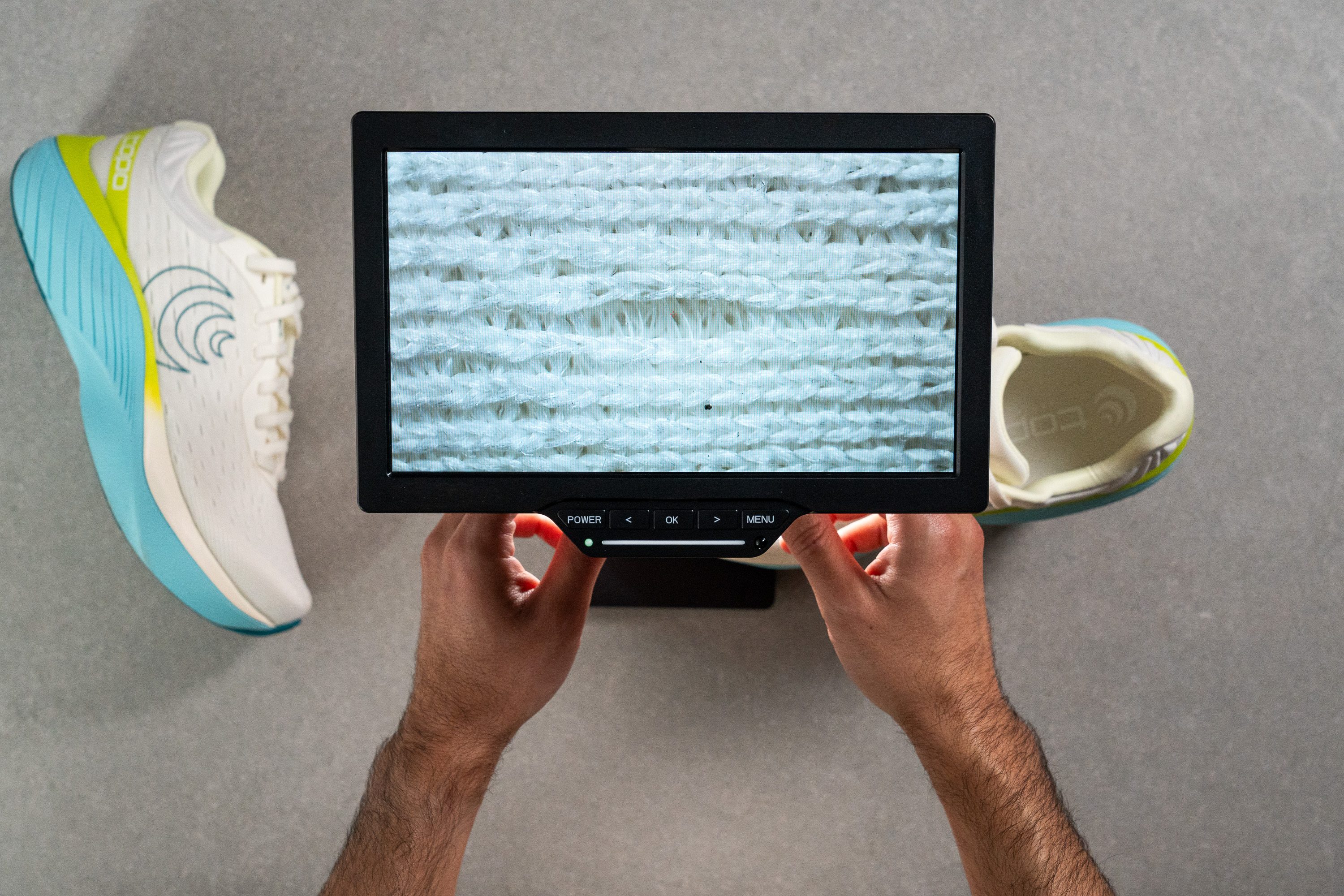
La malla técnica en sí no es particularmente innovadora, la verdad.
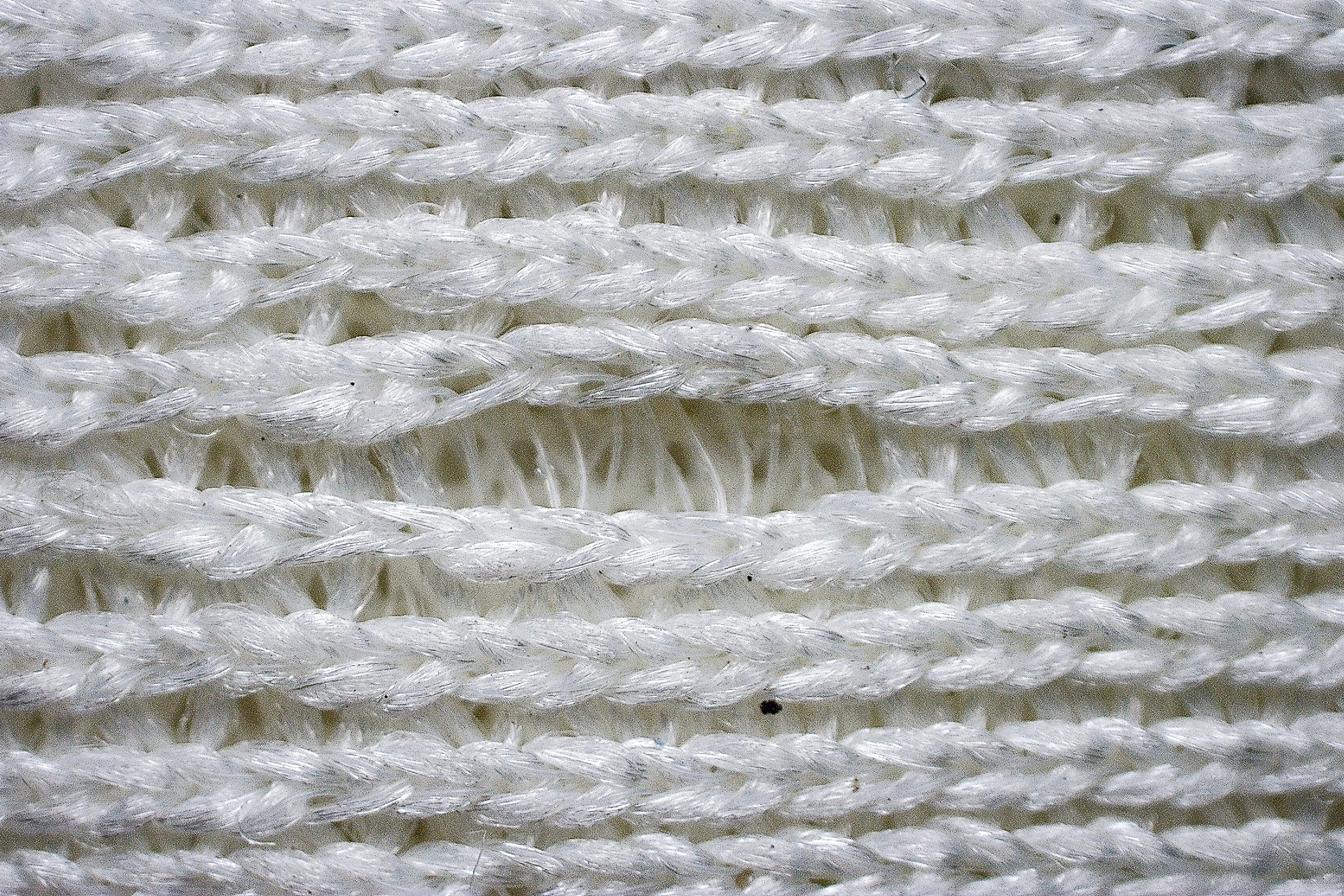
Tiene el mismo diseño de doble capa que vemos en la mayoría de las zapatillas de running, con el objetivo de mejorar tanto la comodidad como la durabilidad.
A ver, en general, este upper no se la juega: Topo fue un poco sobre seguro, optando por un enfoque de confianza y sencillo en cuanto a diseño y materiales. Eso sí, si nos preguntas... nosotros habríamos preferido un poquito más de transpirabilidad.
| Topo Atmos | 3 |
| Media | 3.7 |
Estabilidad
Prueba de estabilidad lateral
En nuestras pruebas de uso corriendo con ellas, descubrimos que ofrecen una pisada razonablemente estable, aunque principalmente se las recomendamos a los corredores neutros o a los que necesitan un poquito de estabilidad.
Su base anchísima, las paredes laterales con una sujeción moderada y el refuerzo del talón hacen que la plataforma sea sólida, a lo que se le suma una estructura rígida. Pero mira, incluso con todos estos elementos, los runners que necesiten un modelo que sea específicamente de estabilidad (como las Hoka Gaviota 5) deberían echarle un ojo a otra cosa, ya que las Atmos no ofrecen ni la estructura ni la sujeción necesarias para las personas con sobrepronación severa.
Rigidez torsional
Nos sorprendió mucho lo rígidas que son estas zapatillas. Aunque no tienen ni una placa ni elementos en la mediasuela que aumenten su firmeza, se llevaron un 5/5 en nuestra prueba manual.
| Topo Atmos | 5 |
| Media | 3.5 |
Rigidez del contrafuerte del talón
El contrafuerte del talón también es bastante más rígido de lo que normalmente nos encontramos en un modelo de entrenamiento diario, ya que se llevó un sólido 4/5. Como dijimos antes, Topo claramente buscó equilibrar la altura máxima de la mediasuela con unas acertadas y estratégicas decisiones de diseño, y esta es una de ellas. Pero no te preocupes, que esta zona sigue siendo cómoda gracias a su estupendo acolchado.
| Topo Atmos | 4 |
| Media | 2.9 |
Anchura de la mediasuela - antepié
Una de las decisiones de diseño más evidentes en este modelo es... que es enorme; incluso sin ser especialmente pesado, la verdad es que se siente un poco voluminoso.
Esto lo confirmamos en el laboratorio, ya que nuestro calibre marcó 119,1 mm cuando medimos la anchura de la mediasuela en el antepié.
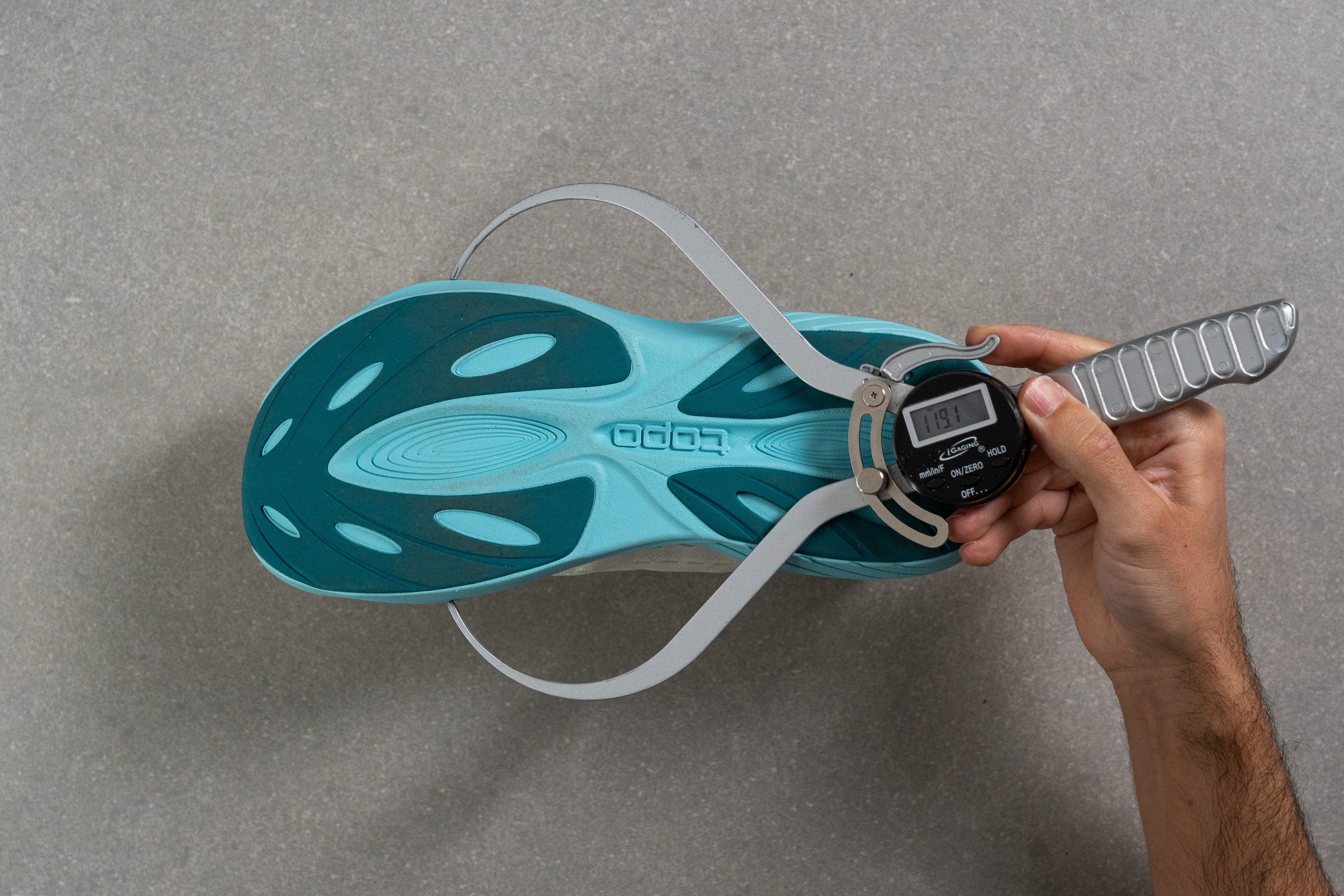
| Topo Atmos | 119.1 mm |
| Media | 114.3 mm |
Anchura de la mediasuela - talón
Cuando medimos la anchura del talón, nos encontramos con unos impresionantes 96,8 mm. Si a esto le sumamos los refuerzos que tiene la suela a los lados en el talón, se hace incluso más evidente que este diseño se adapta a los talonadores que prefieren un drop bajo.
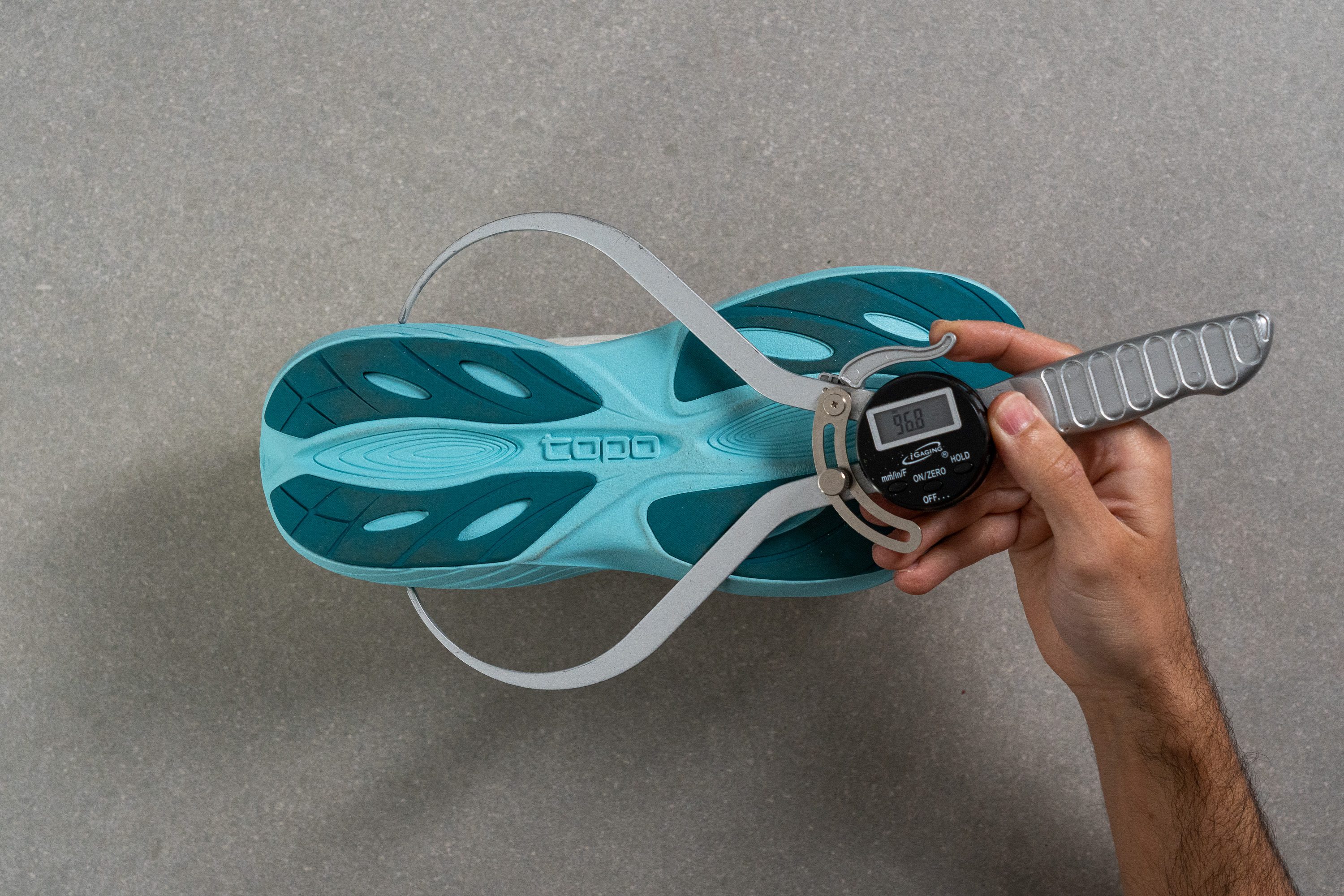
| Topo Atmos | 96.8 mm |
| Media | 90.7 mm |
Durabilidad
Durabilidad de la parte delantera
Cogimos nuestro Dremel para darle caña a la parte delantera, y resulta que es menos duradera de lo que nos esperábamos, así que se llevó solo un 2/5.
| Topo Atmos | 2 |
| Media | 2.6 |
Durabilidad del acolchado del talón
Pero el acolchado del talón le da la vuelta a la tortilla. Mira que, normalmente, la gente se preocupa más por desgastar esta zona, así que estuvimos encantados de darle un perfecto 5/5 en durabilidad.
| Topo Atmos | 5 |
| Media | 3.4 |
Durabilidad de la suela
Esta prueba fue crucial para las Atmos, ya que si hubiesen pinchado... nos habríamos preocupado bastante. ¿Que por qué? Pues porque su suela exterior no tiene mucho caucho.
Por suerte, el desgaste fue de solo 0,8 mm, lo que nos dice que, incluso con su espuma expuesta, la durabilidad debería ser estándar, como la de la mayoría de losmodelos de entrenamiento diario.
| Topo Atmos | 0.8 mm |
| Media | 1.1 mm |
Grosor de la suela
Nos alegró ver que la suela exterior es bastante gruesa. Sus 3,4 mm no están nada mal, sobre todo si estamos hablando de unas Topo.
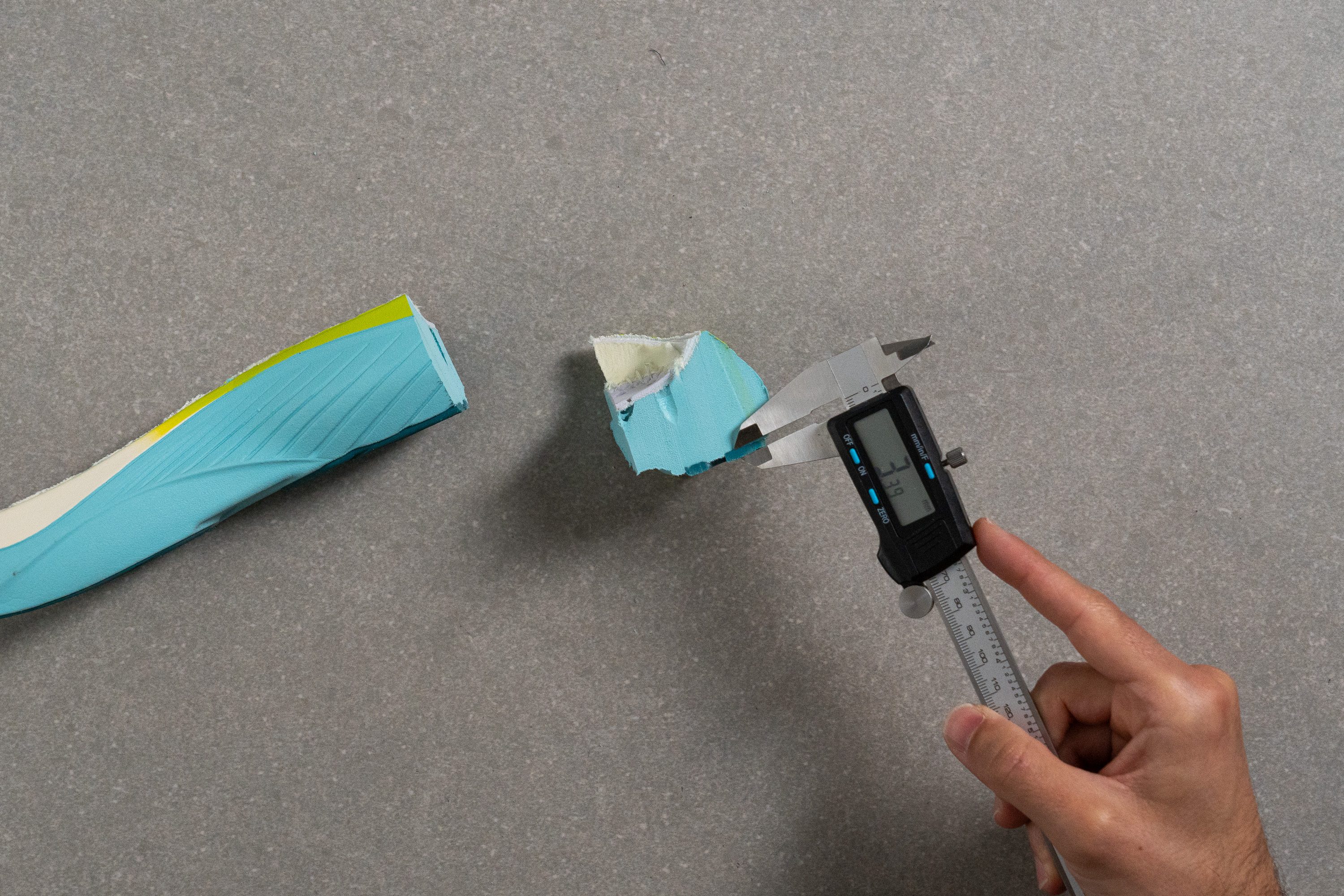
| Topo Atmos | 3.4 mm |
| Media | 3.2 mm |
Varios
Grosor de la plantilla
La plantilla mejora la amortiguación con sus 4,1 mm de grosor, lo que hace que estas zapatillas sean más cómodas.
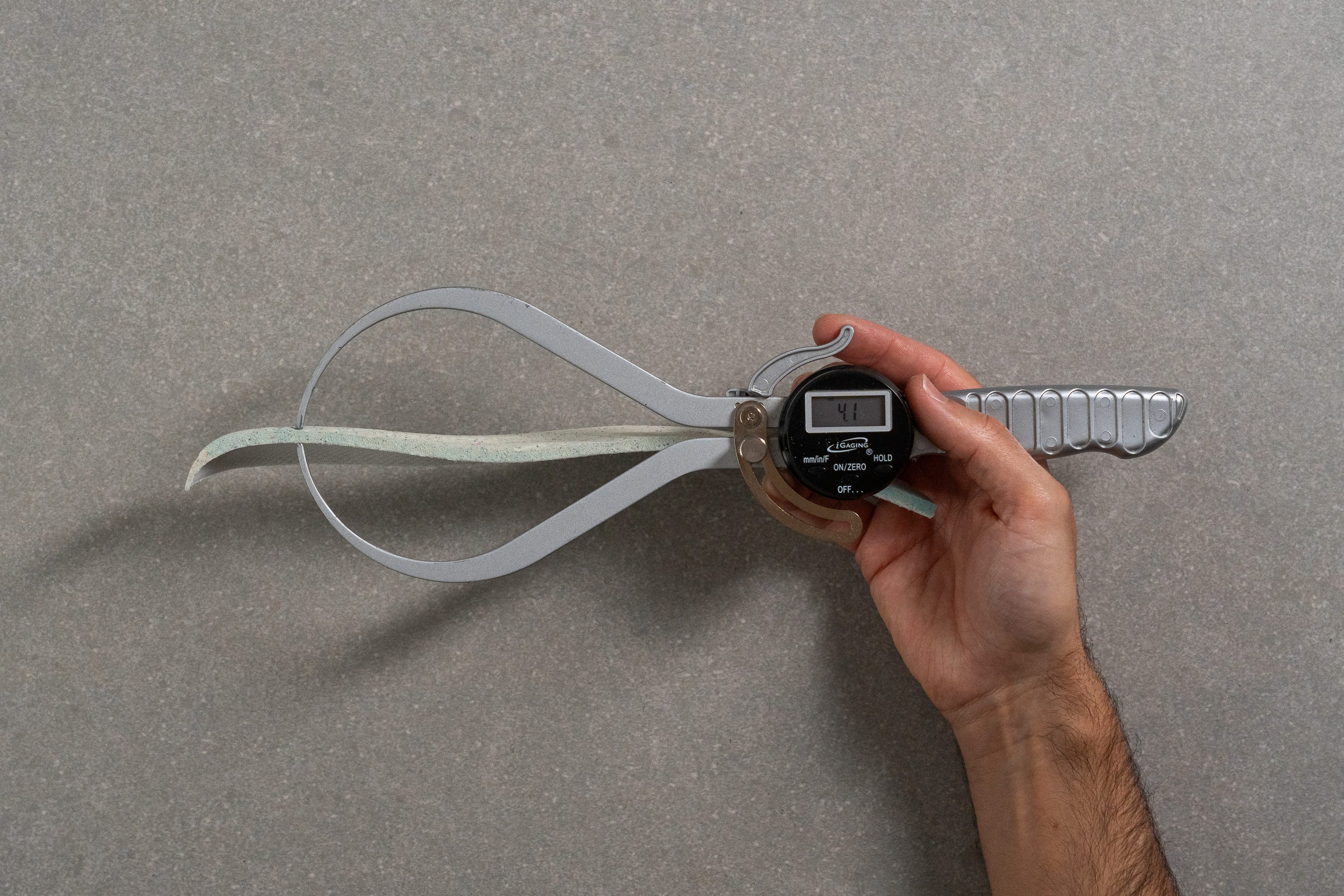
| Topo Atmos | 4.1 mm |
| Media | 4.5 mm |
Plantilla extraíble
Las Atmos vienen con una plantilla Ortholite que puedes cambiar si quieres, pero hemos descubierto que es un componente clave para su comodidad. Cambiarla significaría perder la sensación mullida y la amortiguación reactiva que mejoran la experiencia al correr.
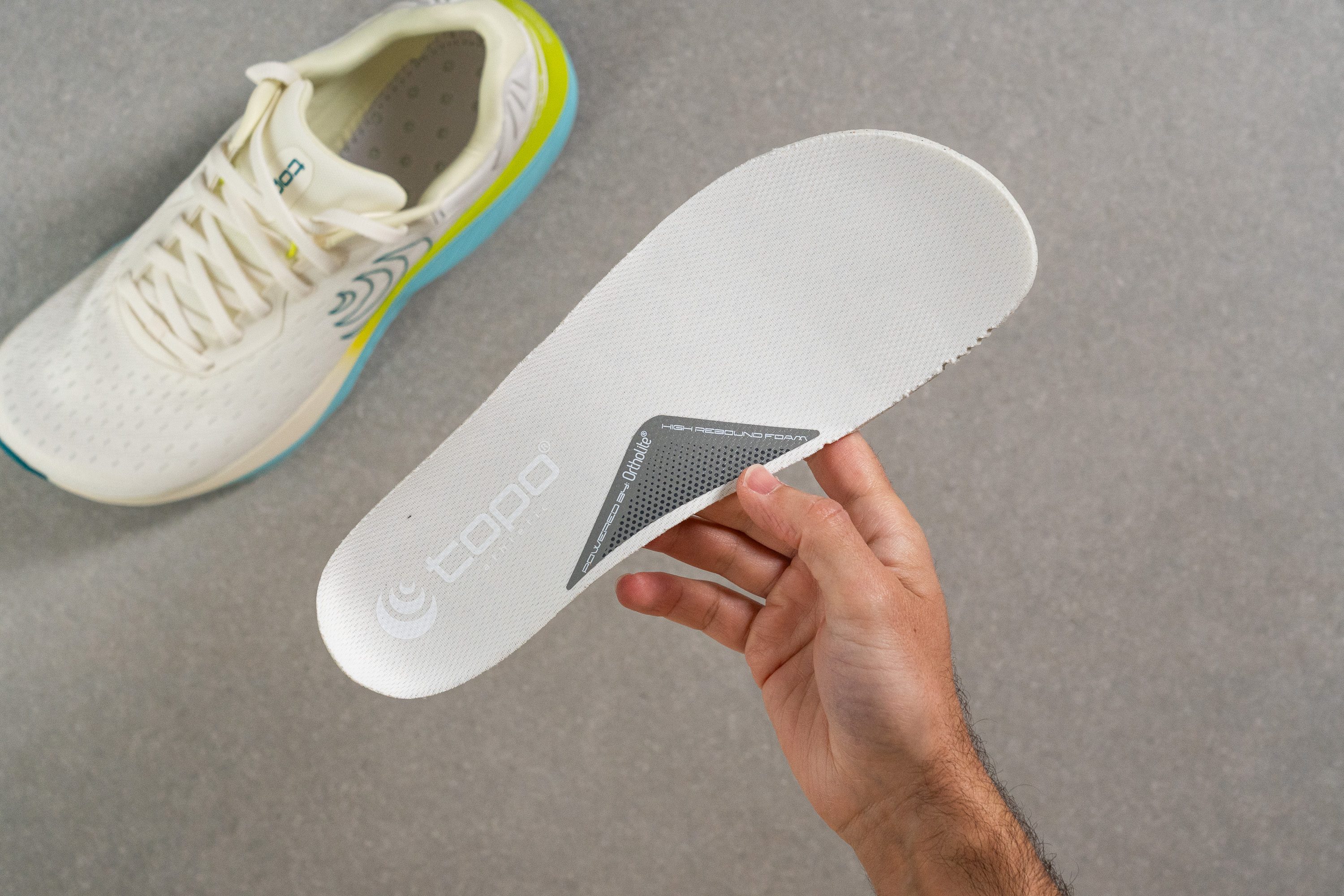
| Topo Atmos | Sí |
Rigidez de la mediasuela en frío (%)
Un cambio del 28 % en la suavidad de la mediasuela después de pasarse 20 minutos en el congelador no está nada mal, y más si hablamos de espuma EVA. La verdad es que nos quedamos contentos con su resistencia al fío.
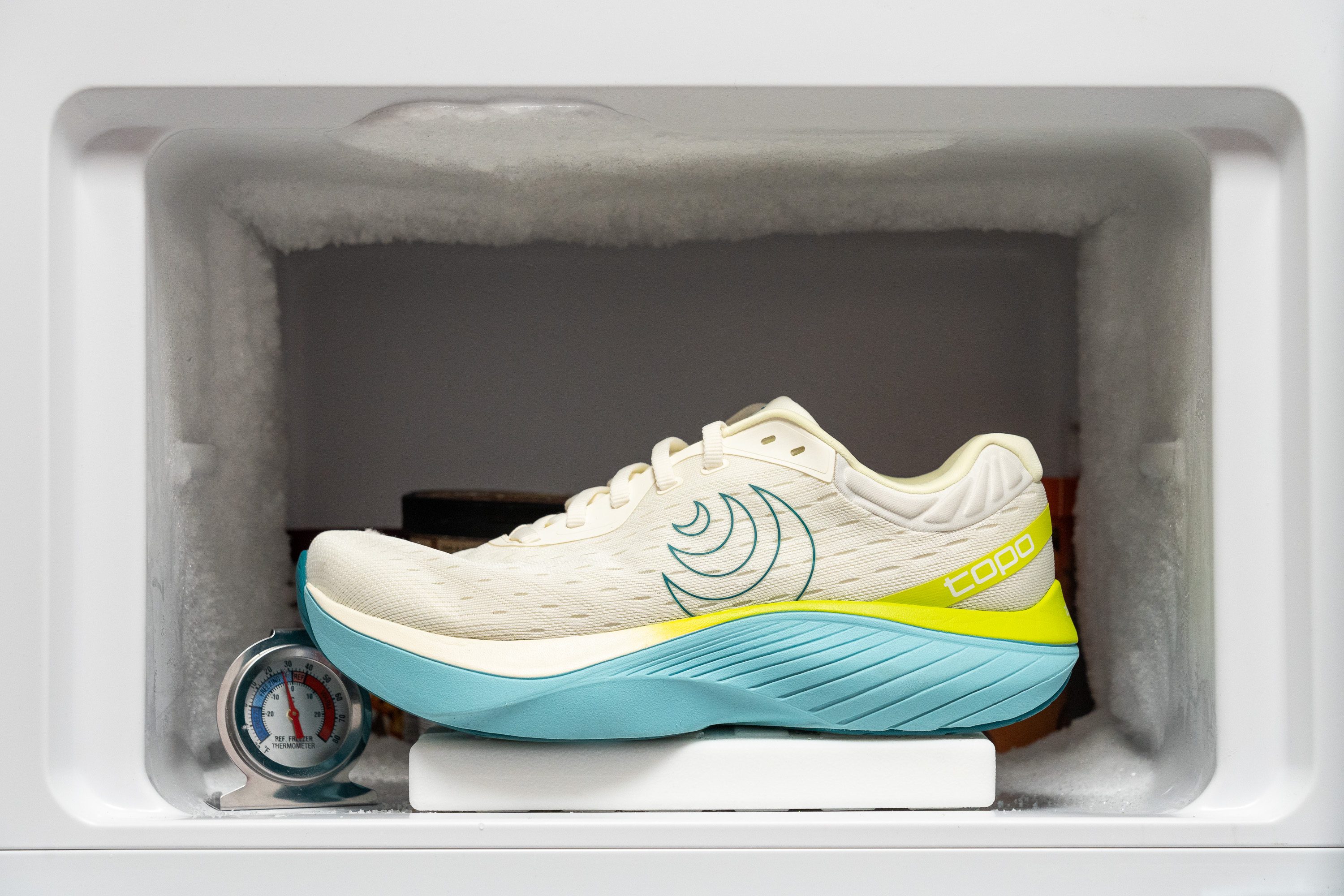
| Topo Atmos | 28% |
| Media | 24% |
Elementos reflectantes
Topo pasó de ponerles elementos reflectantes a las Atmos, perdiendo su oportunidad para mejorar la visibilidad y la seguridad al correr por la noche.
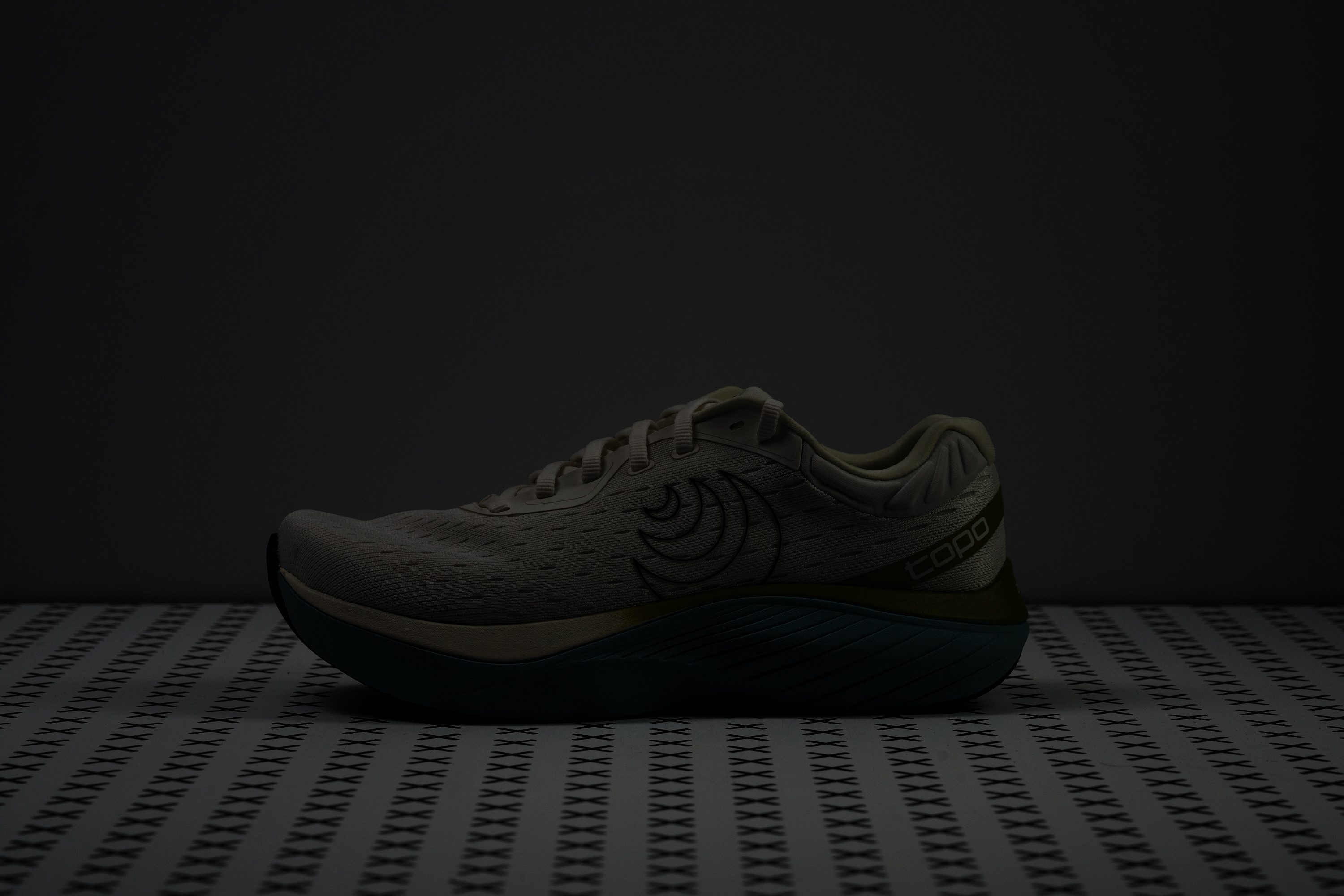
| Topo Atmos | No |
Acolchado de la lengüeta
Una de las características más interesantes de las Atmos es su lengüeta, que tiene un diseño único. Topo les puso dos pequeños bucles, uno a cada lado y cerca del último ojal, en lugar del único lacito, que es lo que tienen la mayoría de las zapatillas de running. Descubrimos que este diseño exclusivo mejora bastante el cierre de este modelo, ya que hace que la lengüeta no se mueva de su sitio vayas al ritmo que vayas.
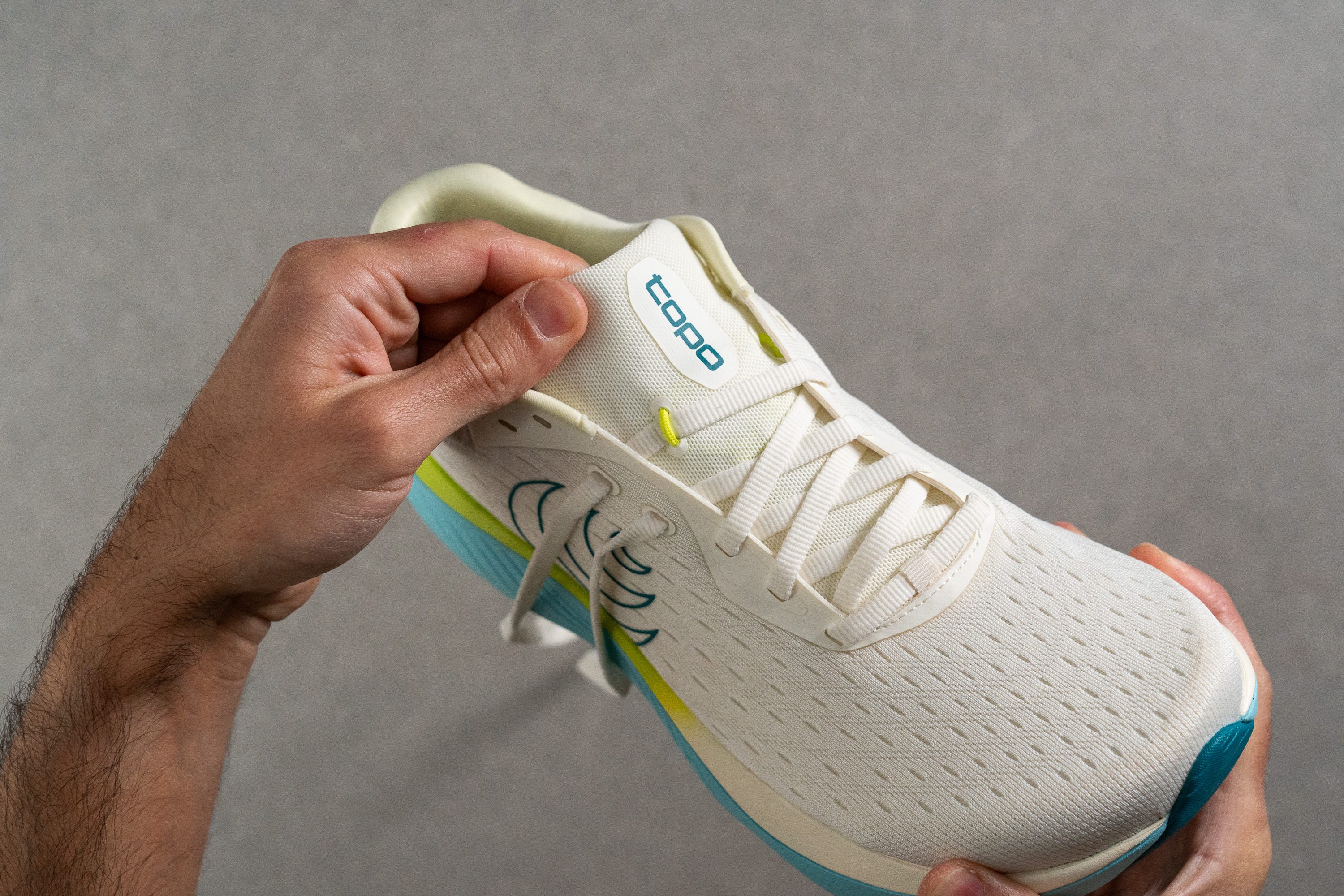
La lengüeta tiene un grosor equilibrado de 6,5 mm, así que combina comodidad y ligereza. Para nosotros, también presume de la cantidad adecuada de acolchado, y nunca sentimos ni presión ni molestias.
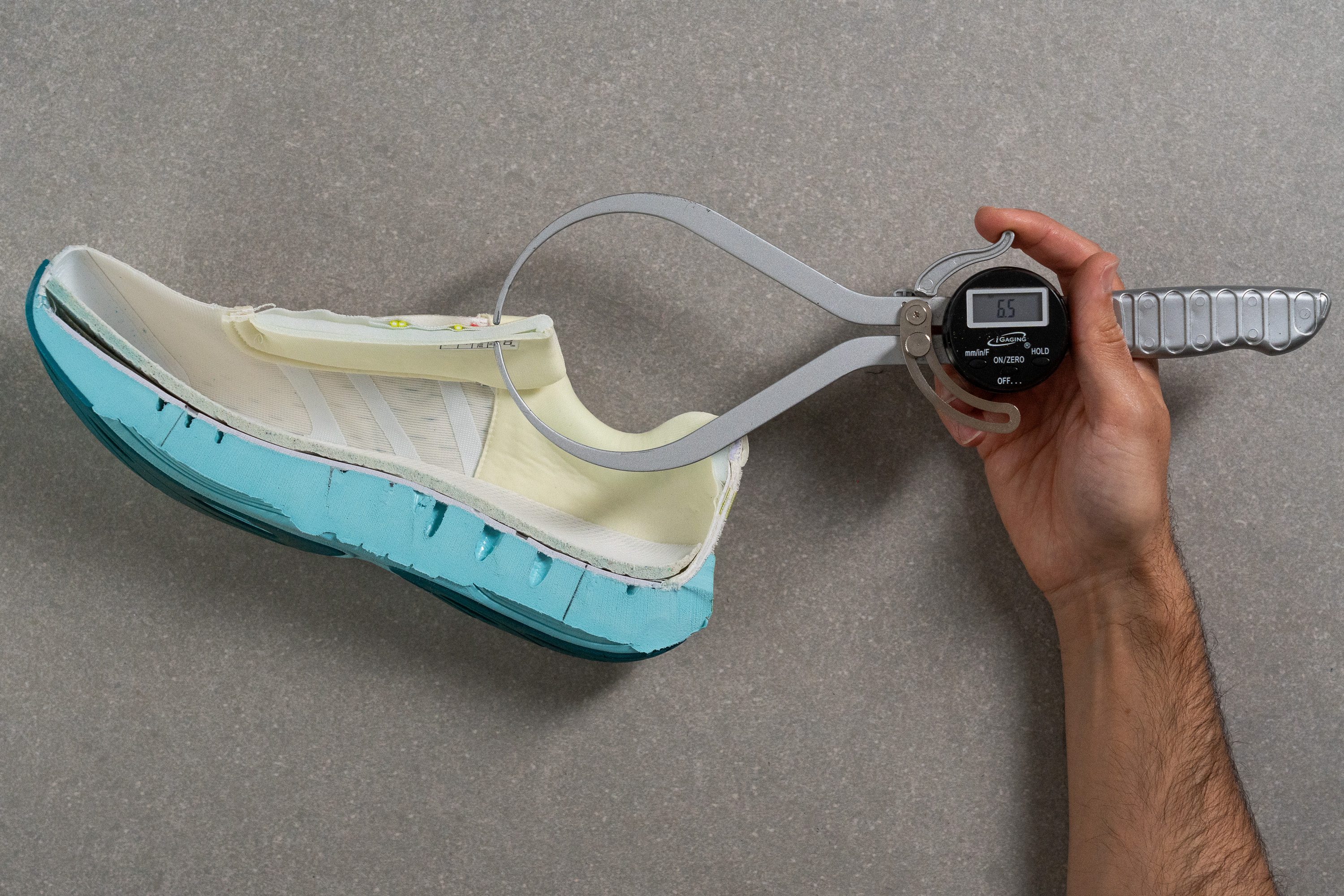
| Topo Atmos | 6.5 mm |
| Media | 5.8 mm |
Lengüeta: tipo de refuerzo
Esos dos bucles juegan un papel crucial, ya que la lengüeta de las Atmos no tiene refuerzos. Mira, en la mayoría de las zapatillas de running, cuando vemos que su lengüeta no tiene refuerzos... resoplamos un poco, no te vamos a mentir. Pero con este diseño innovador, creemos que Topo ha conseguido que la lengüeta se quede en su sitio sin tener que fijarla a los costados.

| Topo Atmos | Ninguno |
Precio
Si priorizas el rendimiento, a lo mejor las Atmos te parecen demasiado caras, ya que ese no es su punto fuerte. Pero para los corredores con pies voluminosos que están buscando un modelo cómodo y de confianza para las tiradas diarias, seguro que la relación calidad-precio de este les gusta. Además, como siguen siendo muy nicho, estas Topo son una alternativa única a las opciones más populares.
| Topo Atmos | $160 |
Tirador del talón
Como pasa con todos los modelos de Topo para correr por asfalto, las Atmos no tienen un tirador en el talón, apostando por un diseño liso y minimalista en esta zona.
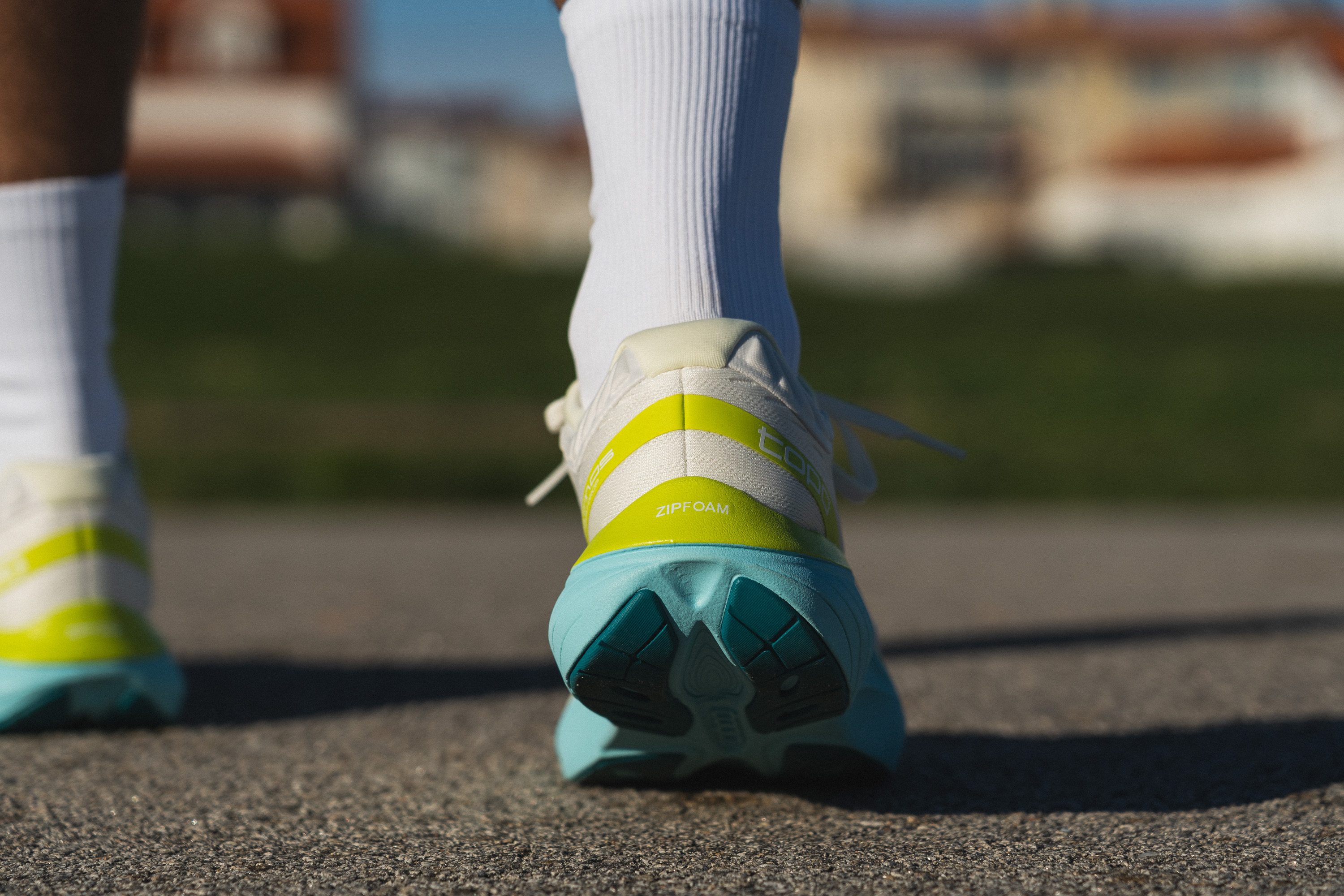
| Topo Atmos | Ninguno |

